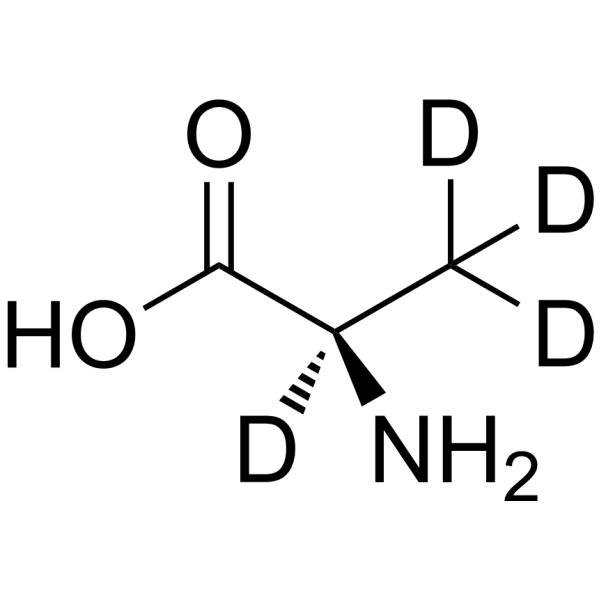Endogenous Metabolite
Metabolite results when a drug is metabolized into a modified form which continues to produce effects. A metabolome in a given body fluid is influenced by endogenous factors such as age, sex, body composition and genetics as well as underlying pathologies.The levels of the enormous array of unique small-molecule metabolites are usually kept tightly regulated by the activity of a very large array of enzymes and transporters responsible for the production, transformation, degradation, and compartmentalization of these small molecules.The levels of the endogenous small molecules present in the brain are normally tightly regulated.
Targets for Endogenous Metabolite
Products for Endogenous Metabolite
- Cat.No. Product Name Information
-
GC35521
Biotin sulfone
An oxidized form of biotin
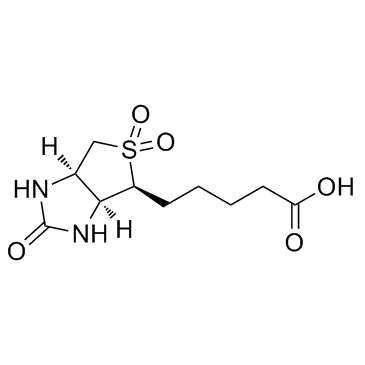
-
GC38654
Bis(2-ethylhexyl) phthalate
Bis(2-ethylhexyl) phthalate (Bis(2-ethylhexyl) phthalate) is an endogenous metabolite.
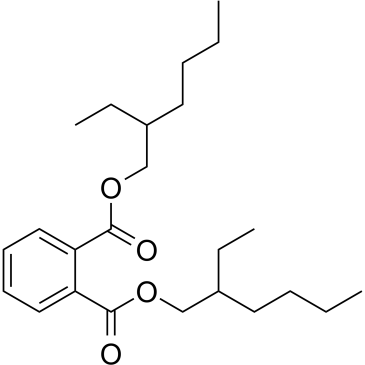
-
GC39480
Bisphenol A
Bisphenol A is a phenolic, organic synthetic compound widely used in the production of polycarbonate plastics and epoxy resins.
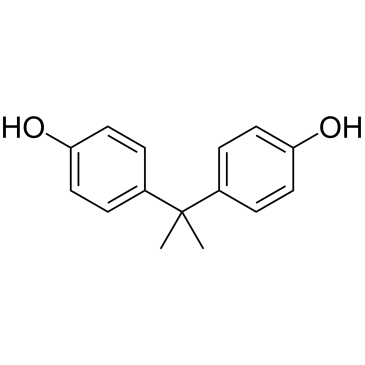
-
GC35541
Boldenone Undecylenate
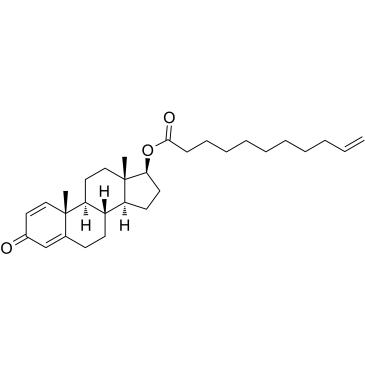
-
GC31626
Bovinic acid
An isomer of linoleic acid
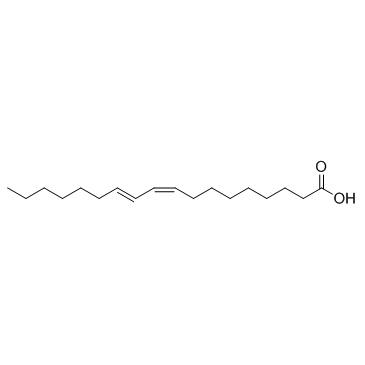
-
GN10146
Butane diacid
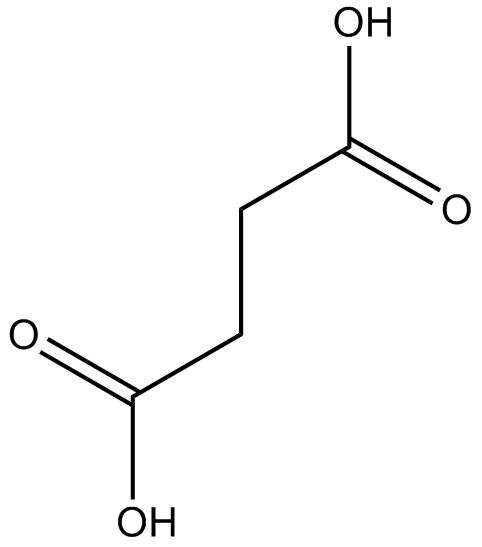
-
GC43000
Butyryl-L-carnitine (chloride)
Butyryl-L-carnitine is a butyrate ester of carnitine.

-
GC46972
Butyryl-L-carnitine-d3 (chloride)
An internal standard for the quantification of butyryl-L-carnitine

-
GC30298
Butyrylcarnitine
Butyrylcarnitine is a metabolite in plasma, acts as a biomarker to improve the diagnosis and prognosis of heart failure, and is indicative of anomalous lipid and energy metabolism.
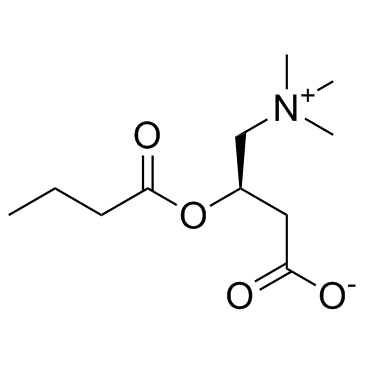
-
GC62198
c-di-AMP sodium
C-di-AMP is a STING agonist, which binds to the transmembrane protein STING, thereby activating the TBK3-IRF3 signaling pathway, subsequently triggering the production of type I IFN and TNF.
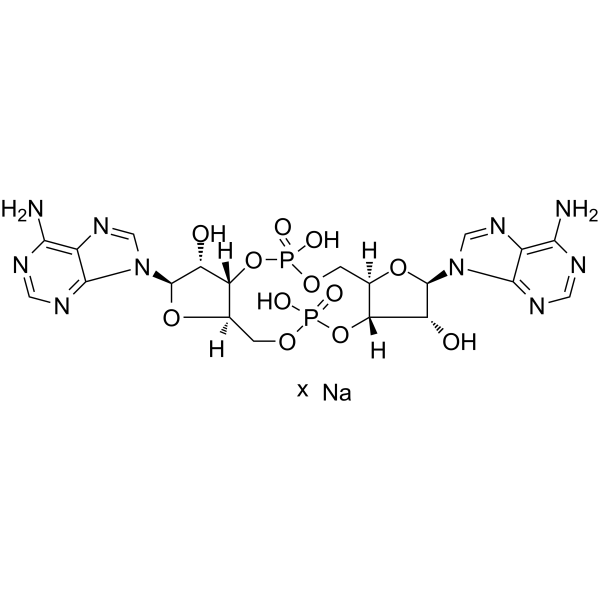
-
GN10792
Caffeic acid
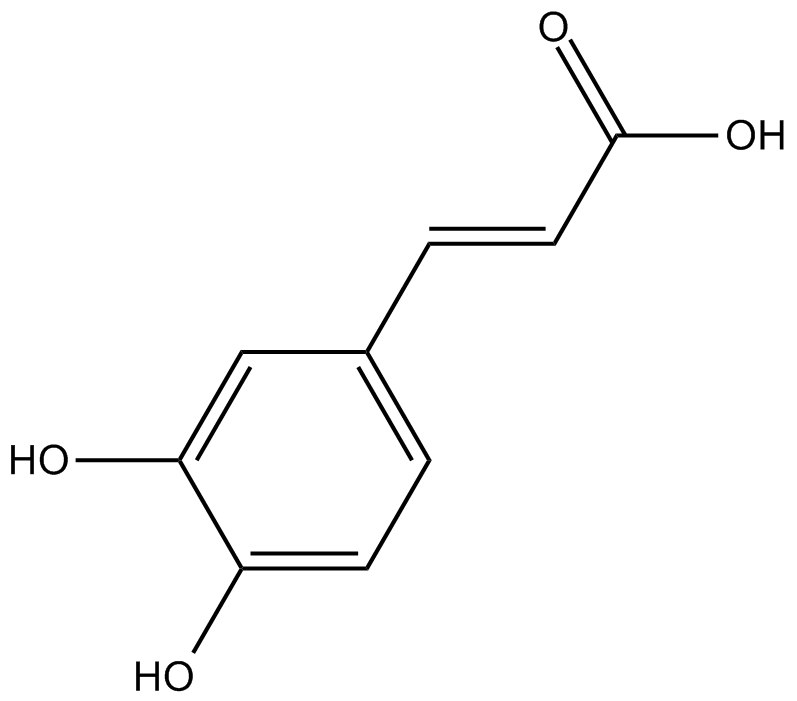
-
GC16066
Calcifediol
Major circulating form of vitamin D3
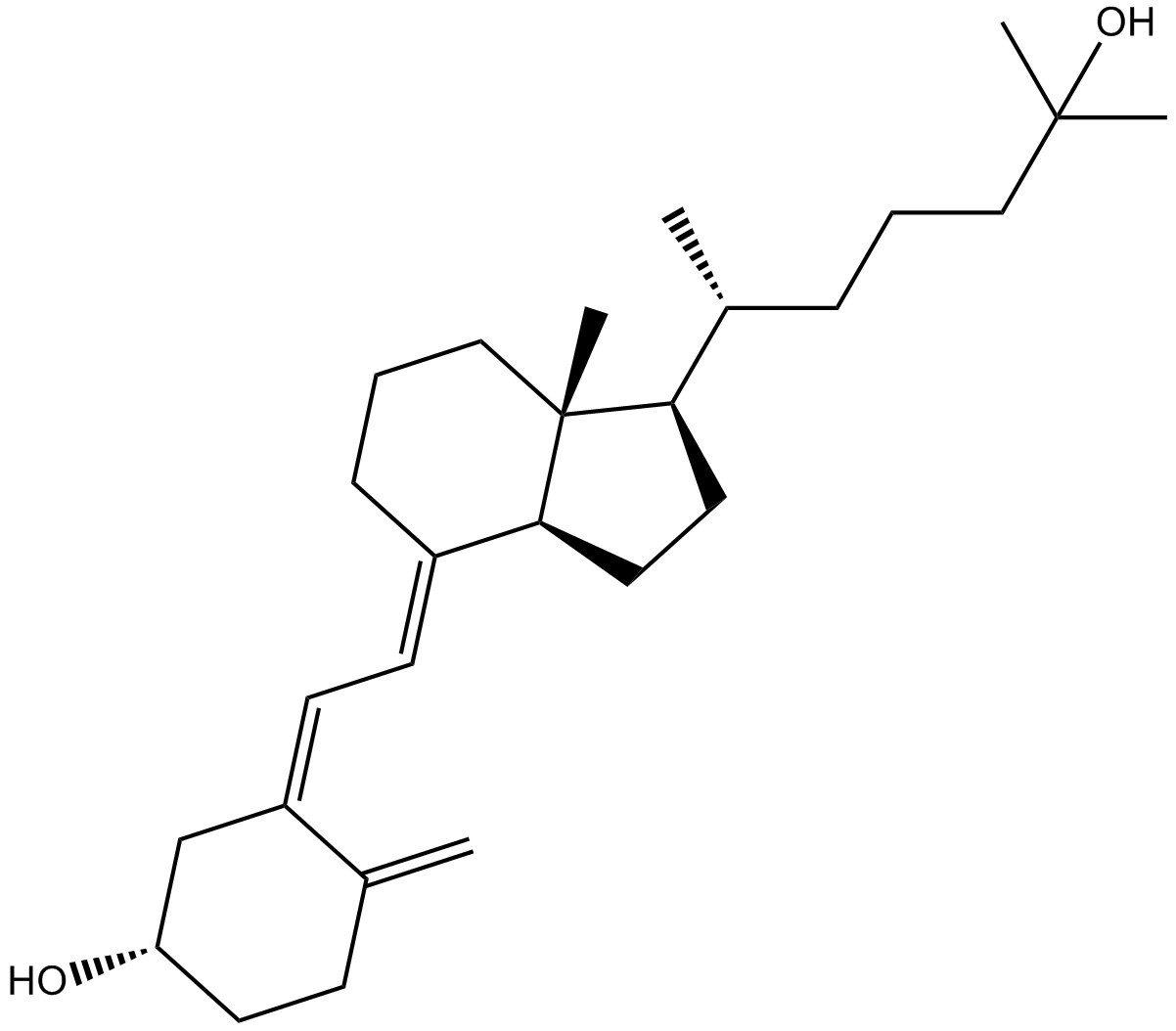
-
GC63877
Calcifediol-d3
Calcifediol-d3 is a deuterium labeled Calcifediol.
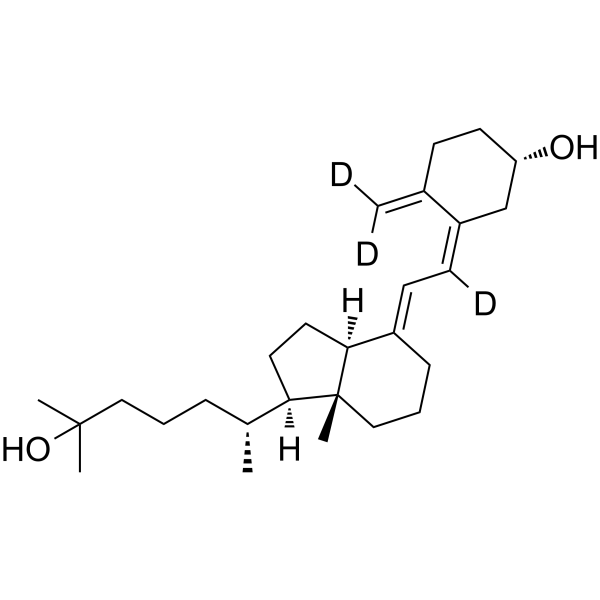
-
GC13852
Calcitriol
Calcitriol, as the most biologically active metabolite derived from the secosteroid hormone vitamin D, the inhibition of calcitriol caused decreased effects of anticancer drugs.
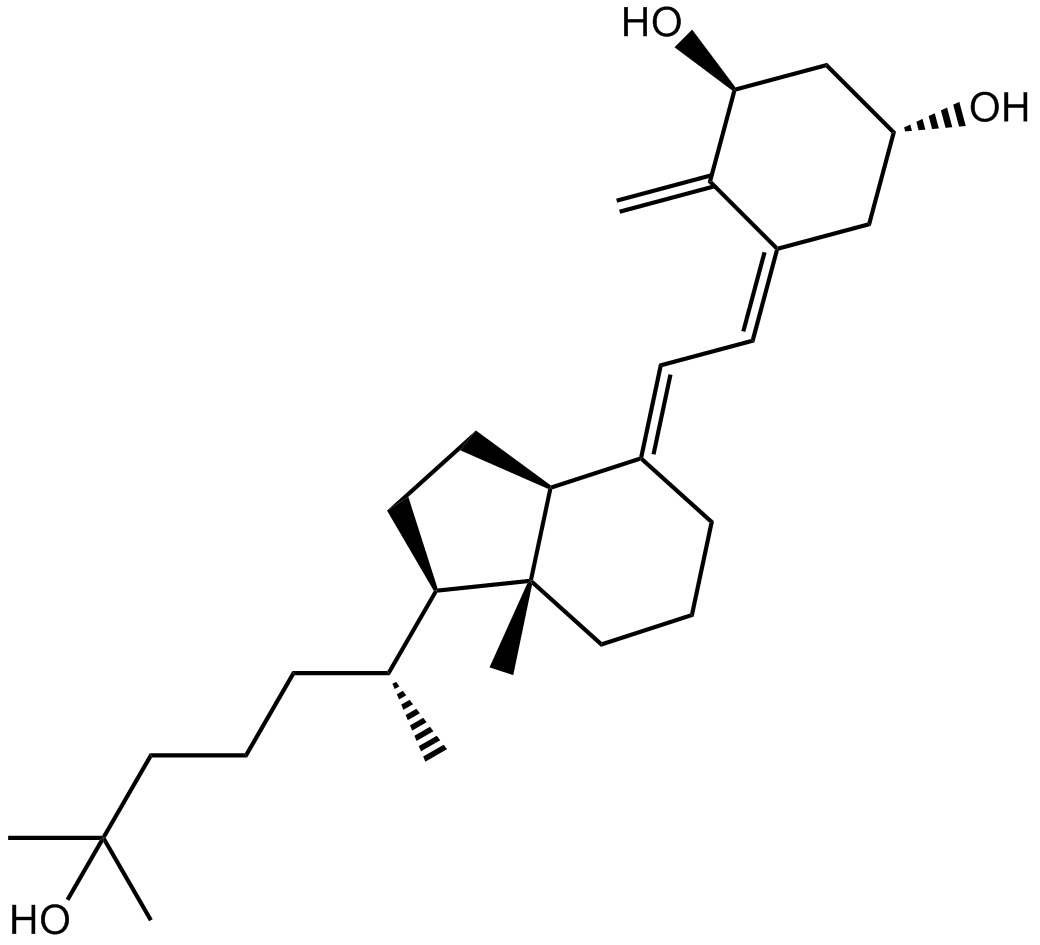
-
GC62883
Calcium 2-hydroxy-4-(methylthio)butanoate
Calcium 2-hydroxy-4-(methylthio)butanoate is an endogenous metabolite.
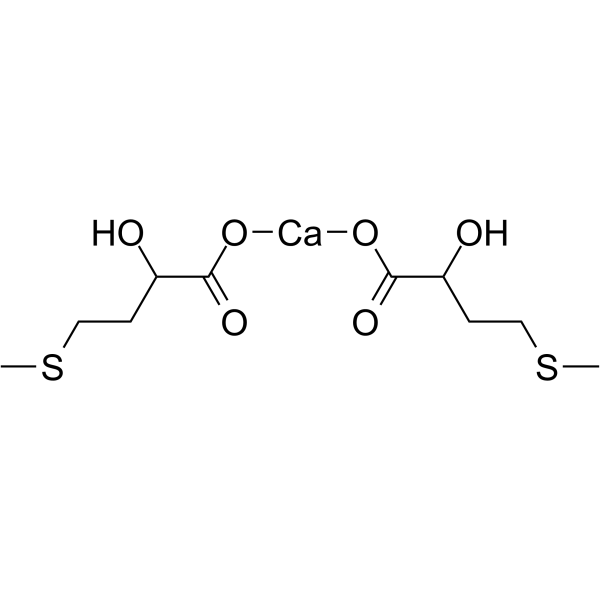
-
GC15161
Calcium D-Panthotenate
Calcium D-Panthotenate (Vitamin B5 calcium salt), a vitamin, can reduce the patulin content of the apple juice.
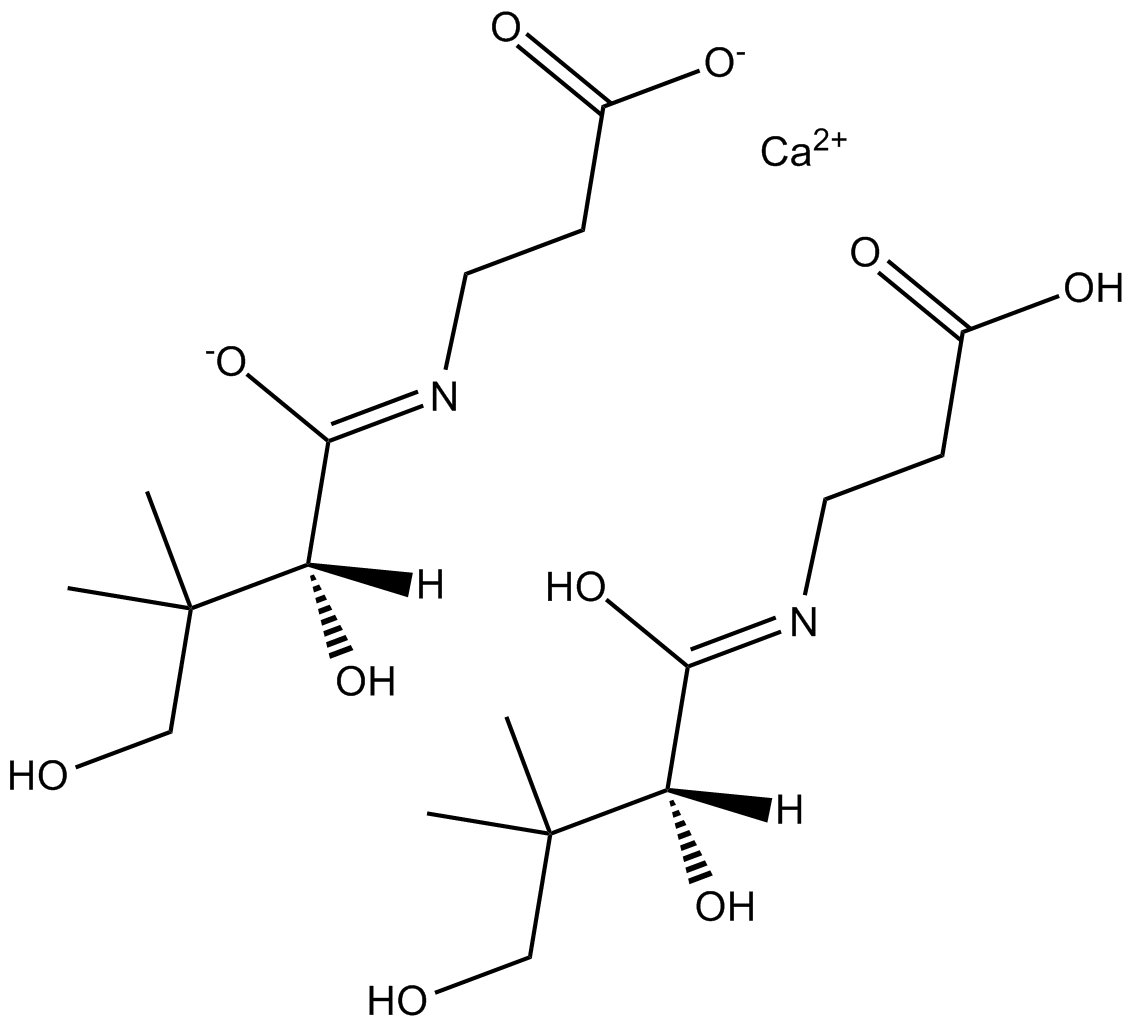
-
GC11242
Calcium Gluceptate
Calcium Gluceptate is an endogenous metabolite.
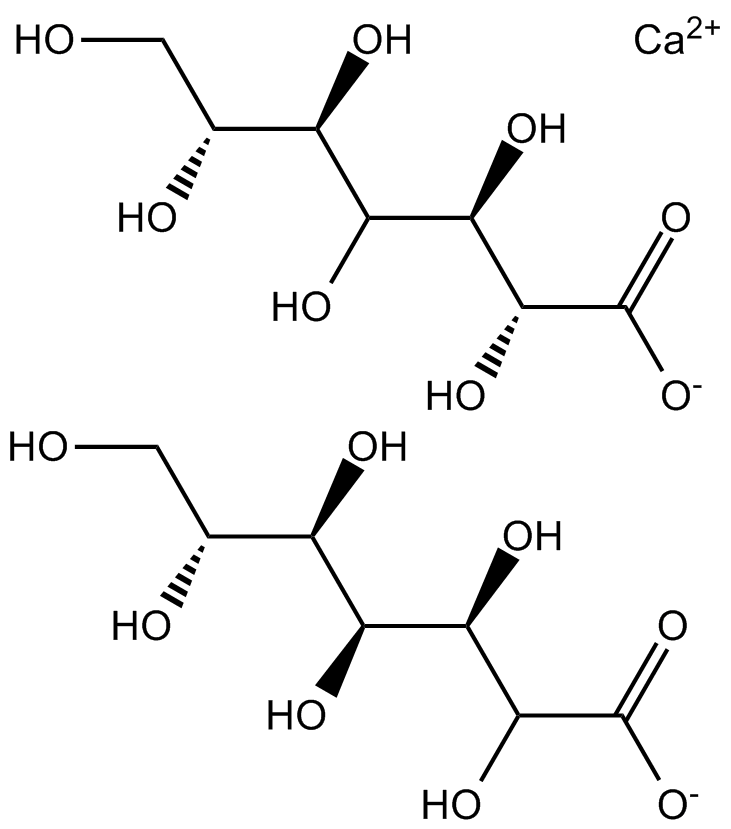
-
GC62884
Calcium L-Threonate
Calcium L-Threonate is an anti-osteoporosis agent, and widely used as a calcium supplement.
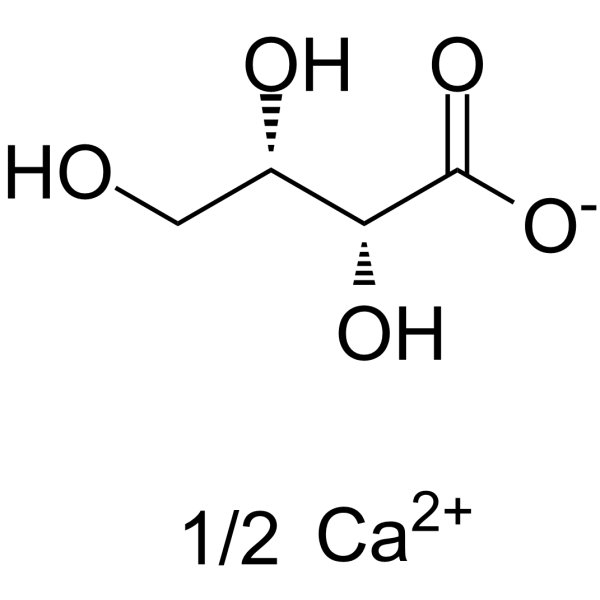
-
GC66167
Calcium Phytate
Calcium Phytate is found in food and is significant for human nutrition.
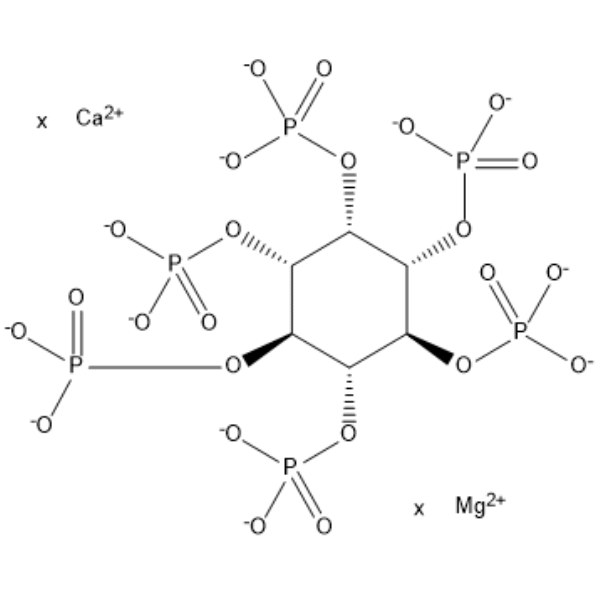
-
GC60672
Carveol
A monoterpene alcohol with nematocidal activity
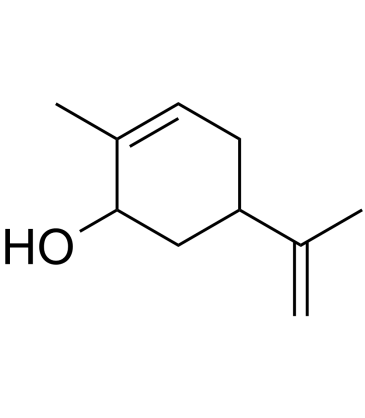
-
GC19572
Catechol
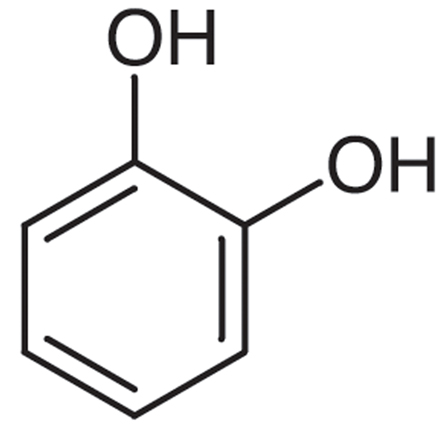
-
GC16449
Cellobiose
Cellobiose is an endogenous metabolite.
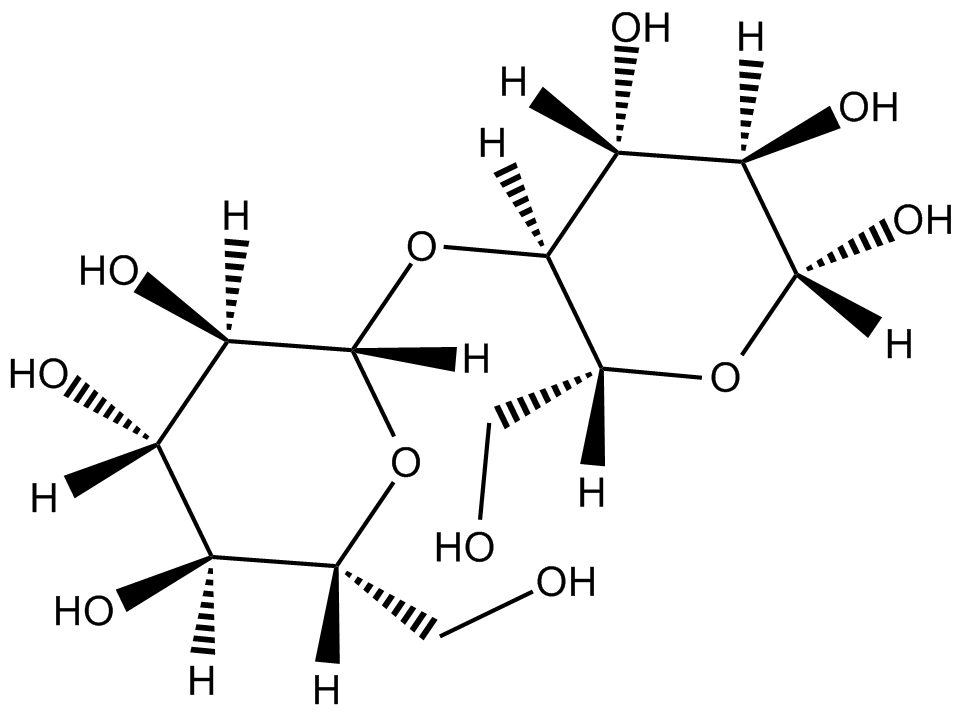
-
GC50060
Cerestat
Cerestat (Cerestat) is a non-competitive NMDA receptor antagonist with neuroprotective effect.
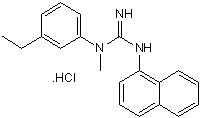
-
GC62241
cGAMP disodium
cGAMP (Cyclic GMP-AMPP) disodium functions as an endogenous second messenger in metazoans and triggers interferon production in response to cytosolic DNA.
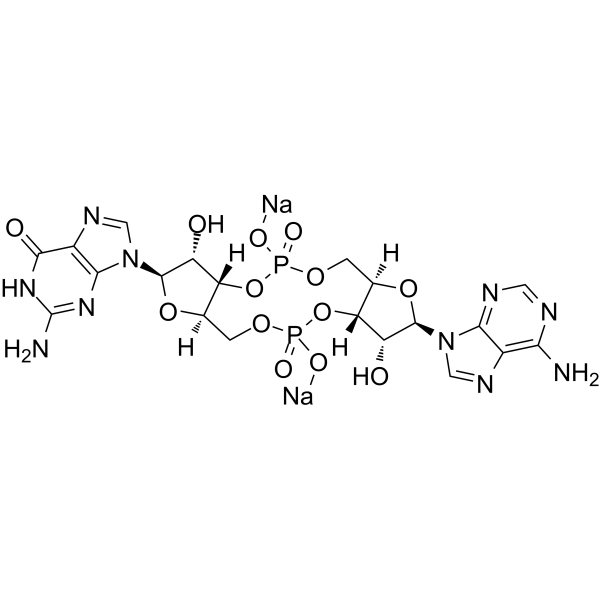
-
GC17985
Chenodeoxycholic Acid
nuclear receptors(FXR) activator
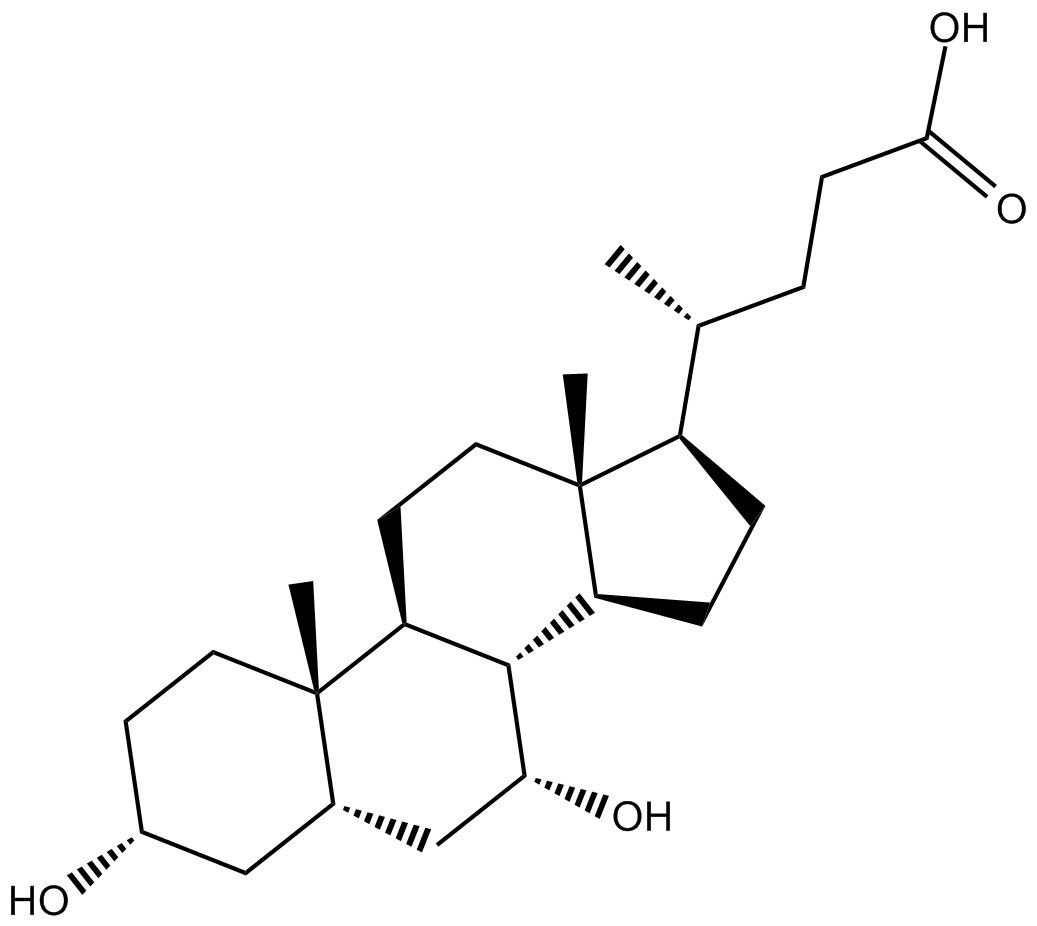
-
GC48595
Chenodeoxycholic Acid MaxSpec® Standard
A quantitative analytical standard guaranteed to meet MaxSpec® identity, purity, stability, and concentration specifications

-
GN10518
Chitosamine hydrochloride
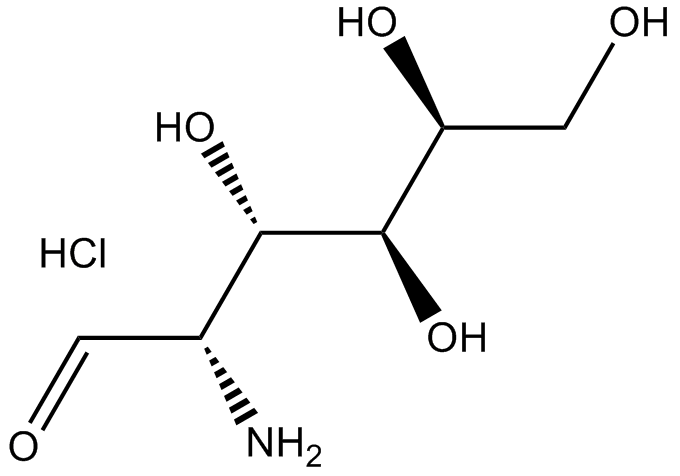
-
GC31590
Cholestenone
A cholesterol metabolite
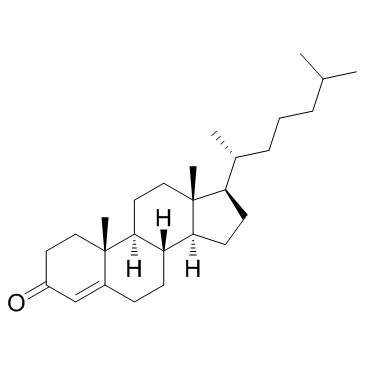
-
GC17398
Cholesterol
Major sterol in mammals
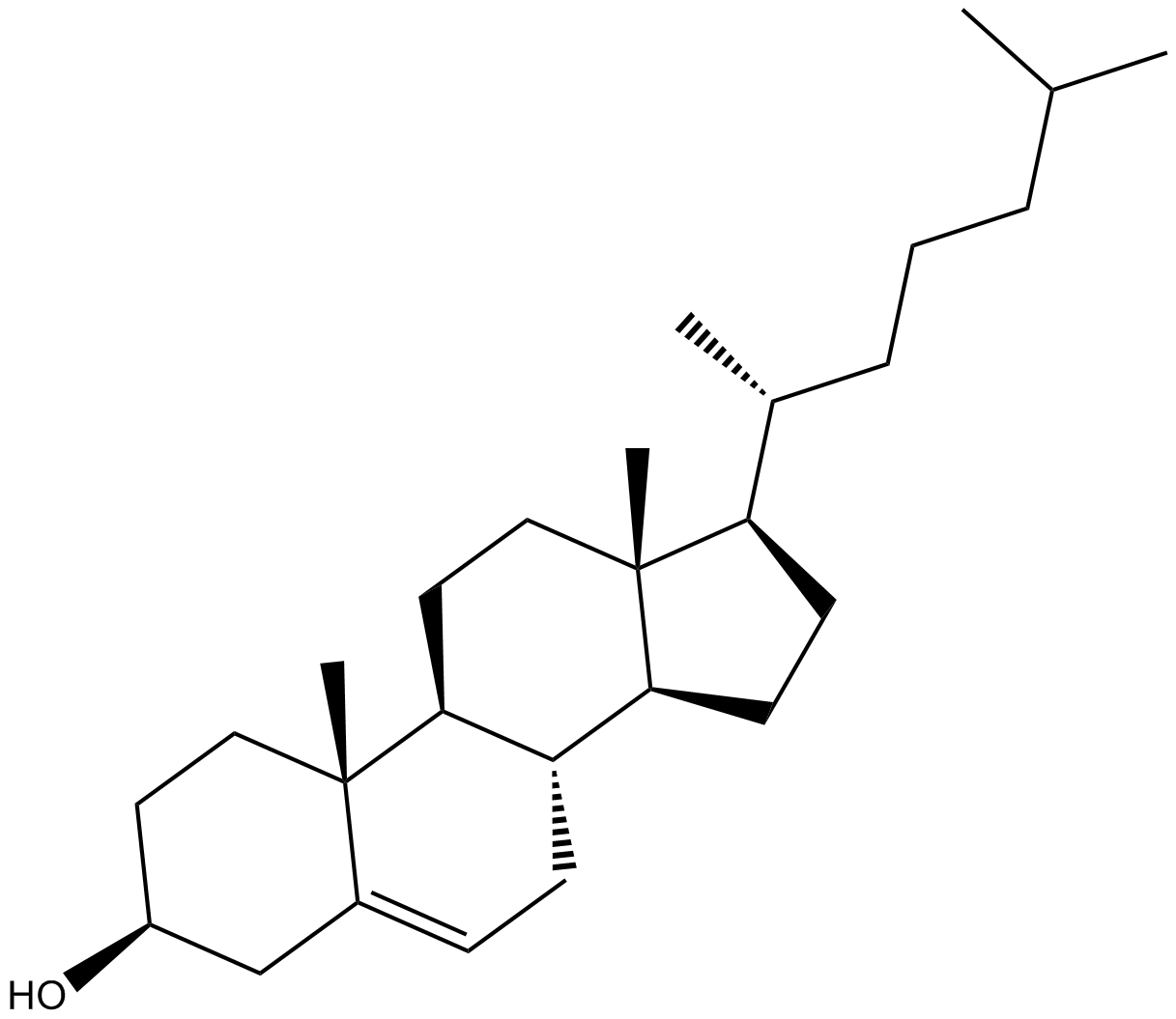
-
GC62896
Cholesterol glucuronide
Cholesterol glucuronide is an endogenous metabolite of lipid generated in the liver by UDP glucuonyltransferase.
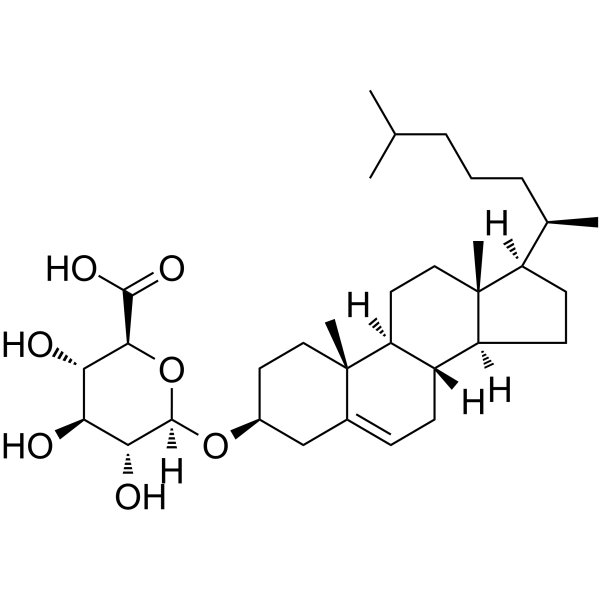
-
GC43251
Cholesterol Sulfate (sodium salt)
Cholesterol Sulfate (sodium salt) is an important regulatory molecule.

-
GC18224
Cholesterol α-Linolenate
Cholesterol α-linolenate is a cholesterol ester found in fatty streaks and atherosclerotic plaques isolated from human aorta.
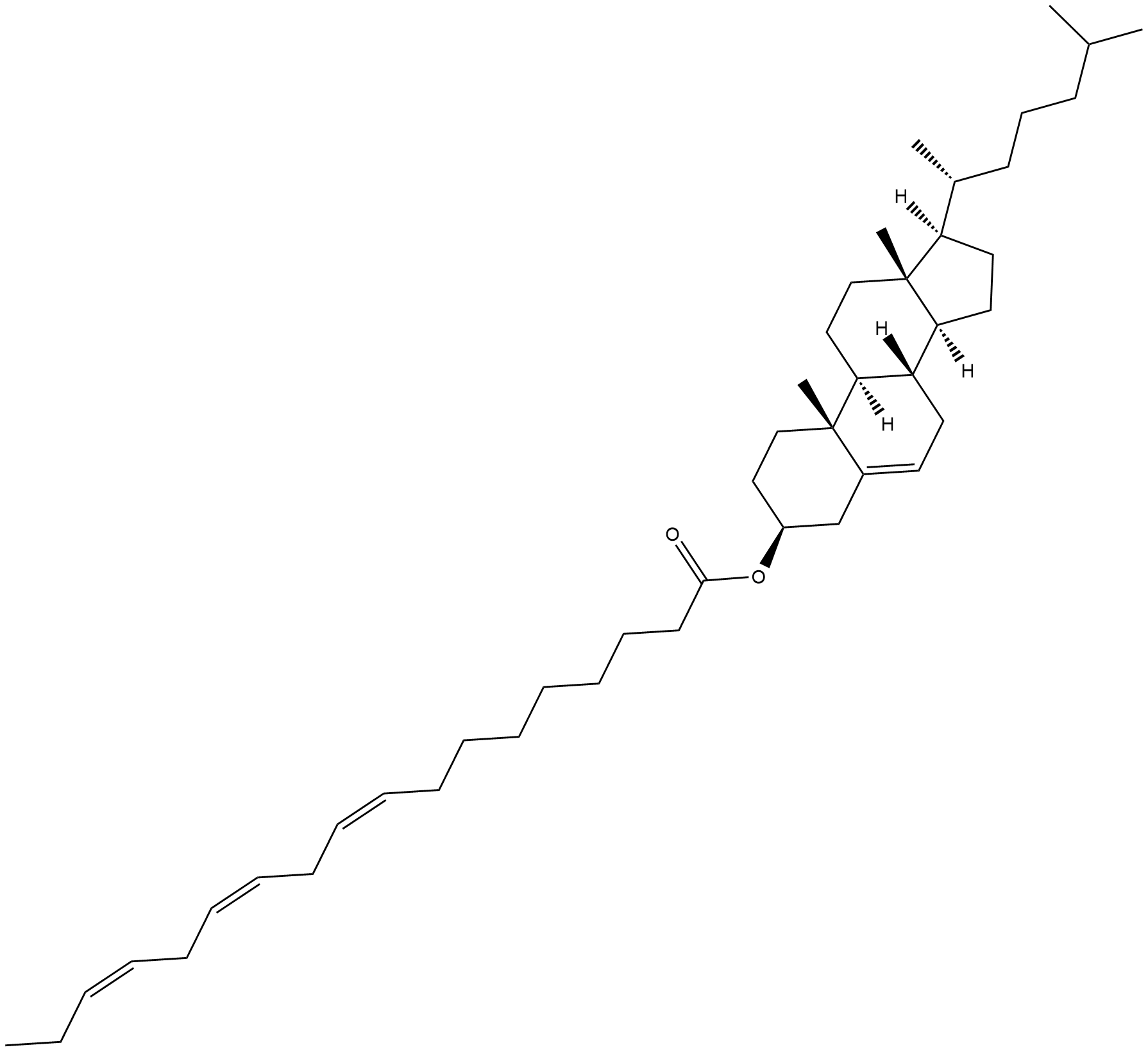
-
GC63843
Cholesterol-13C3
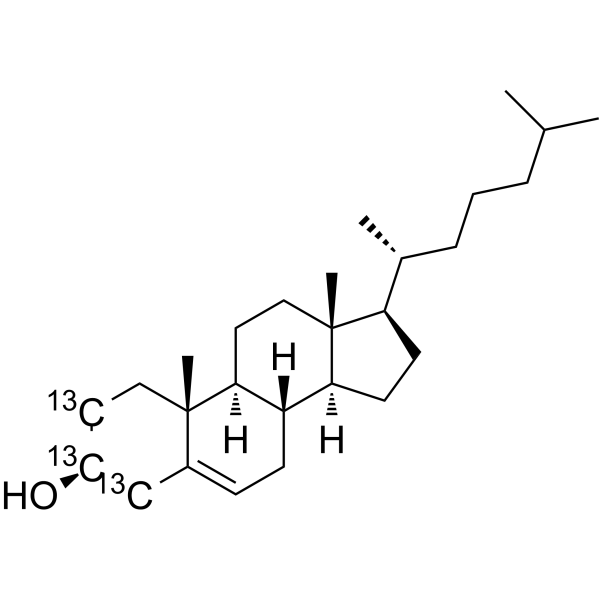
-
GC64334
Cholesterol-13C5
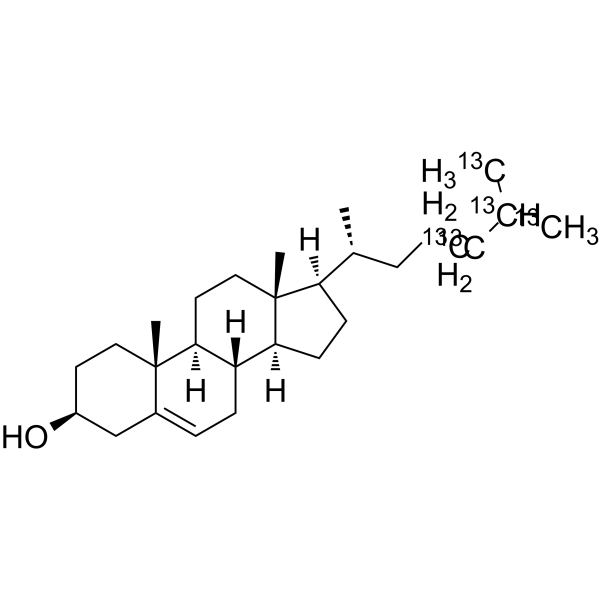
-
GC38574
Cholesteryl arachidonate
Cholesteryl arachidonate is an endogenous metabolite.
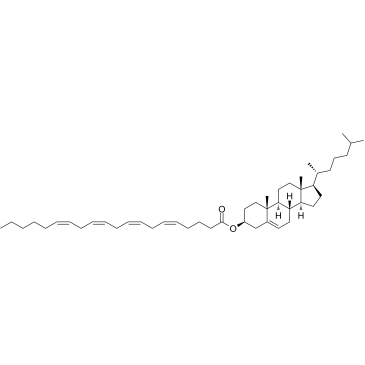
-
GC31401
Cholesteryl behenate (Cholesteryl docosanoate)
Cholesteryl behenate (Cholesteryl docosanoate) is a cholesterol ester associated with the neutral core of low density lipoprotein Receptor-LDL complexes are taken up by lysosomes and hydrolyzed to release cholesterol from the esters.
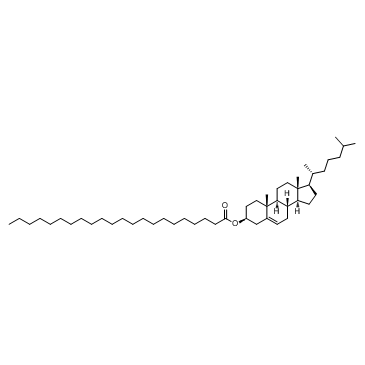
-
GC43257
Cholesteryl Eicosapentaenoate
Cholesteryl Eicosapentaenoate is an endogenous metabolite.

-
GC31636
Cholesteryl linoleate
A cholesterol ester
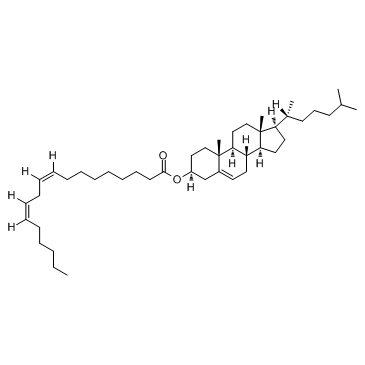
-
GC43261
Cholesteryl Myristate
Cholesteryl Myristate is a natural steroid present in traditional Chinese medicine. Cholesteryl Myristate binds to several ion channels such as the nicotinic acetylcholine receptor, GABAA receptor, and the inward-rectifier potassium ion channel.

-
GC30278
Cholesteryl oleate
Cholesteryl oleate is an esterified form of Cholesterol.
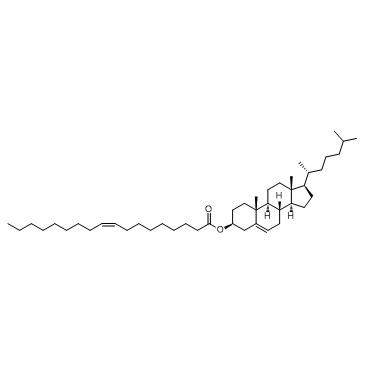
-
GC32037
Cholesteryl palmitate
A cholesterol ester
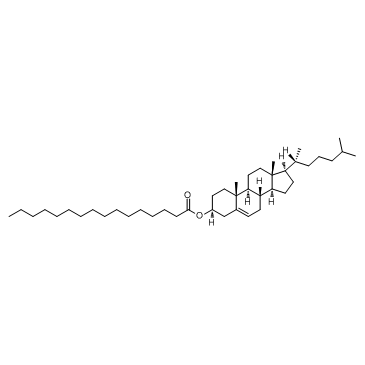
-
GN10623
Cholic acid
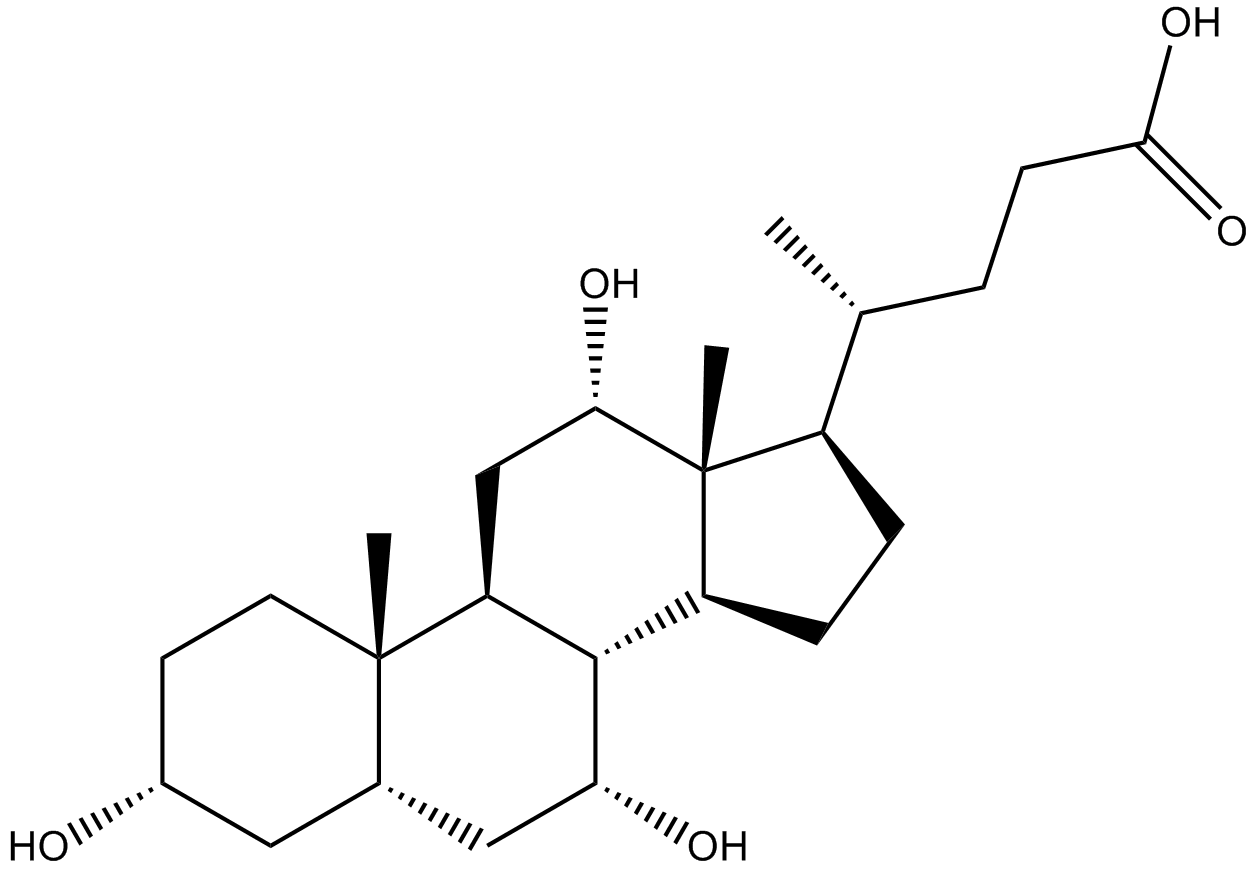
-
GC39670
Cholic acid sodium
Cholic acid sodium is a major primary bile acid produced in the liver and usually conjugated with glycine or taurine.
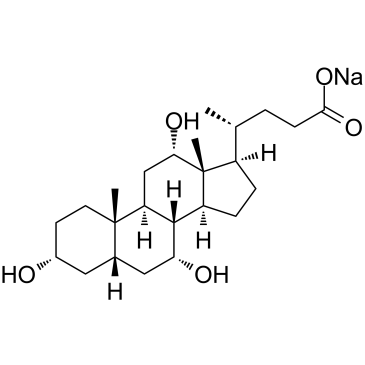
-
GC68375
Cholic acid-13C
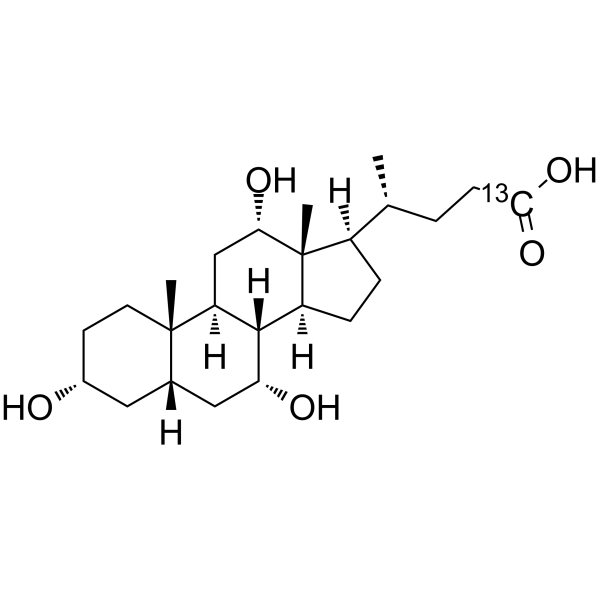
-
GC66372
Cholic acid-d5
Cholic acid-d5 is the deuterium labeled Cholic acid. Cholic acid is a major primary bile acid produced in the liver and usually conjugated with glycine or taurine. It facilitates fat absorption and cholesterol excretion.
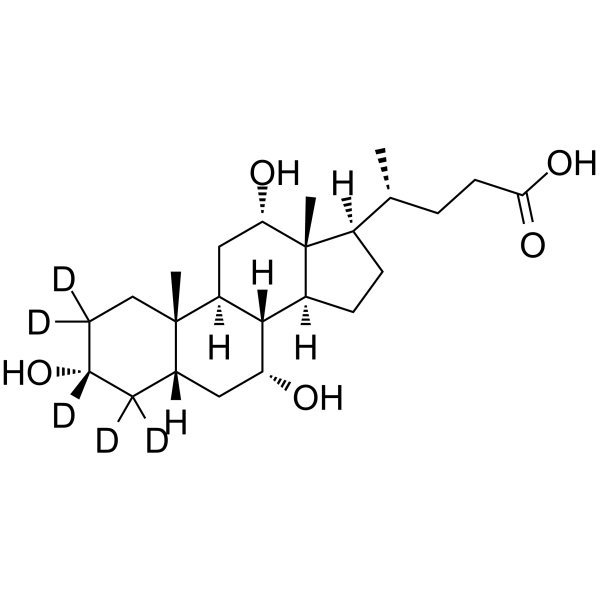
-
GN10342
Chondroitin sulfate
Chondroitin sulfate, one of five classes of glycosaminoglycans, has been widely used in the treatment of osteoarthritis.
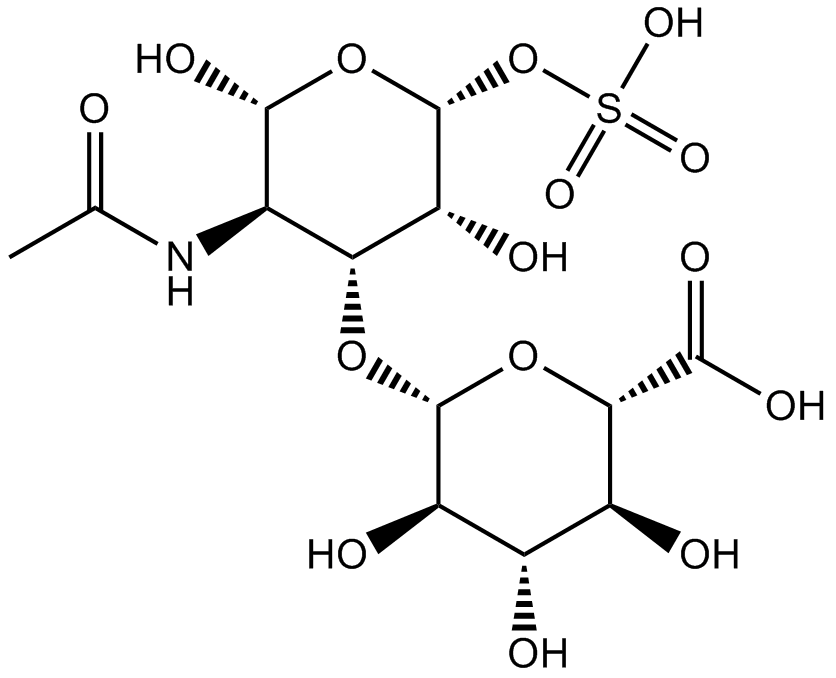
-
GN10190
Cinnamic acid
trans-Cinnamic acid is a natural antimicrobial, with minimal inhibitory concentration (MIC) of 250 μg/mL against fish pathogen A.
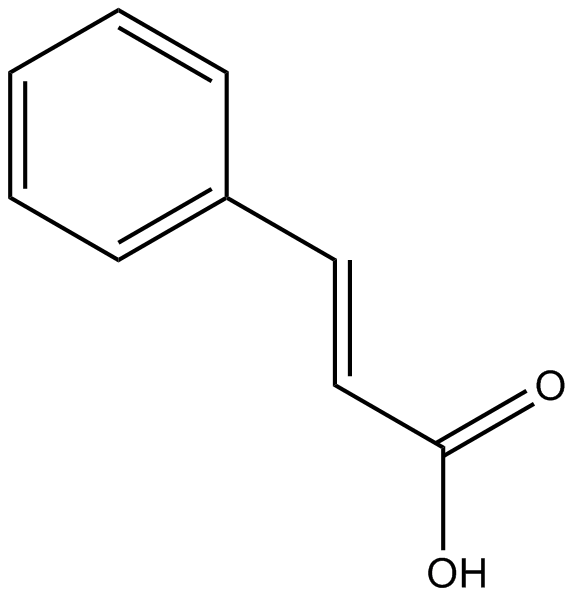
-
GC65528
Cinnamic acid-d6
Cinnamic acid-d6 (3-Phenylacrylic acid-d6) is the deuterium labeled Cinnamic acid. Cinnamic acid has potential use in cancer intervention, with IC50s of 1-4.5 mM in glioblastoma, melanoma, prostate and lung carcinoma cells.
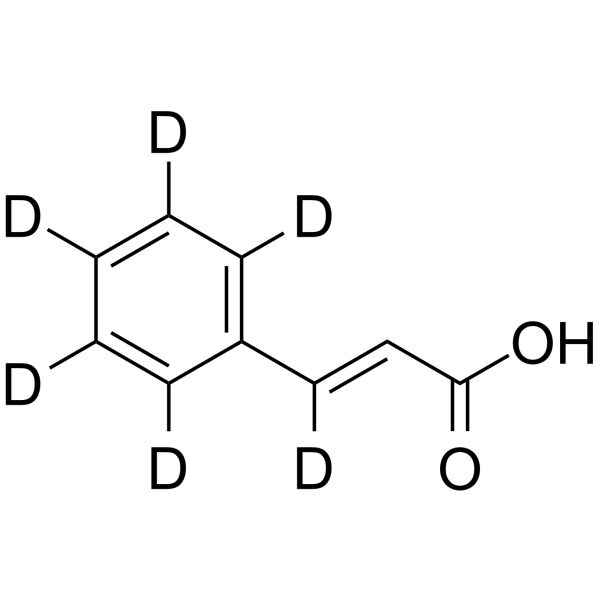
-
GC39533
Cinnamoylglycine
Cinnamoylglycine is a glycine conjugate of cinnamic acid and a urinary metabolite in human.
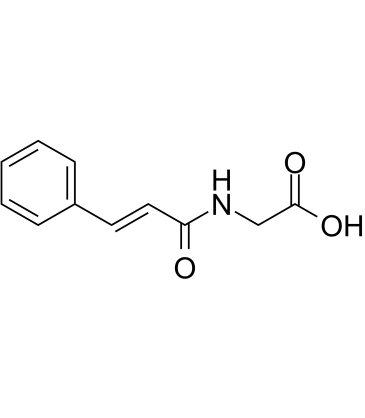
-
GC41586
cis-Petroselinic Acid
cis-Petroselinic Acid, a positional isomer of oleic acid, is isolated from the vegetable oil of Coriandrum sativum fruits.

-
GC38205
cis-9,10-Epoxystearic acid
cis-9,10-Epoxystearic acid (cis-9,10-Epoxyoctadecanoic acid) is an endogenous constituent in human blood and urine.
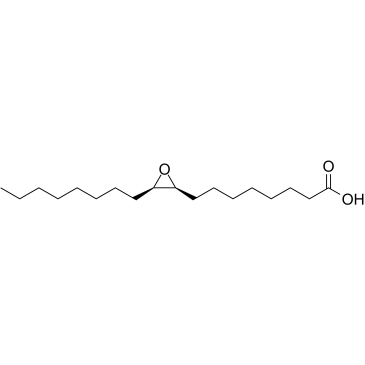
-
GC35703
Citicoline
Citicoline (Cytidine diphosphate-choline) is an intermediate in the synthesis of phosphatidylcholine, a component of cell membranes.
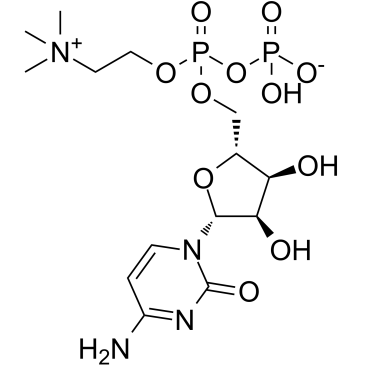
-
GC31186
Citicoline sodium salt
Citicoline sodium salt salt is an intermediate in the synthesis of phosphatidylcholine which is a component of cell membranes and also exerts neuroprotective effects.
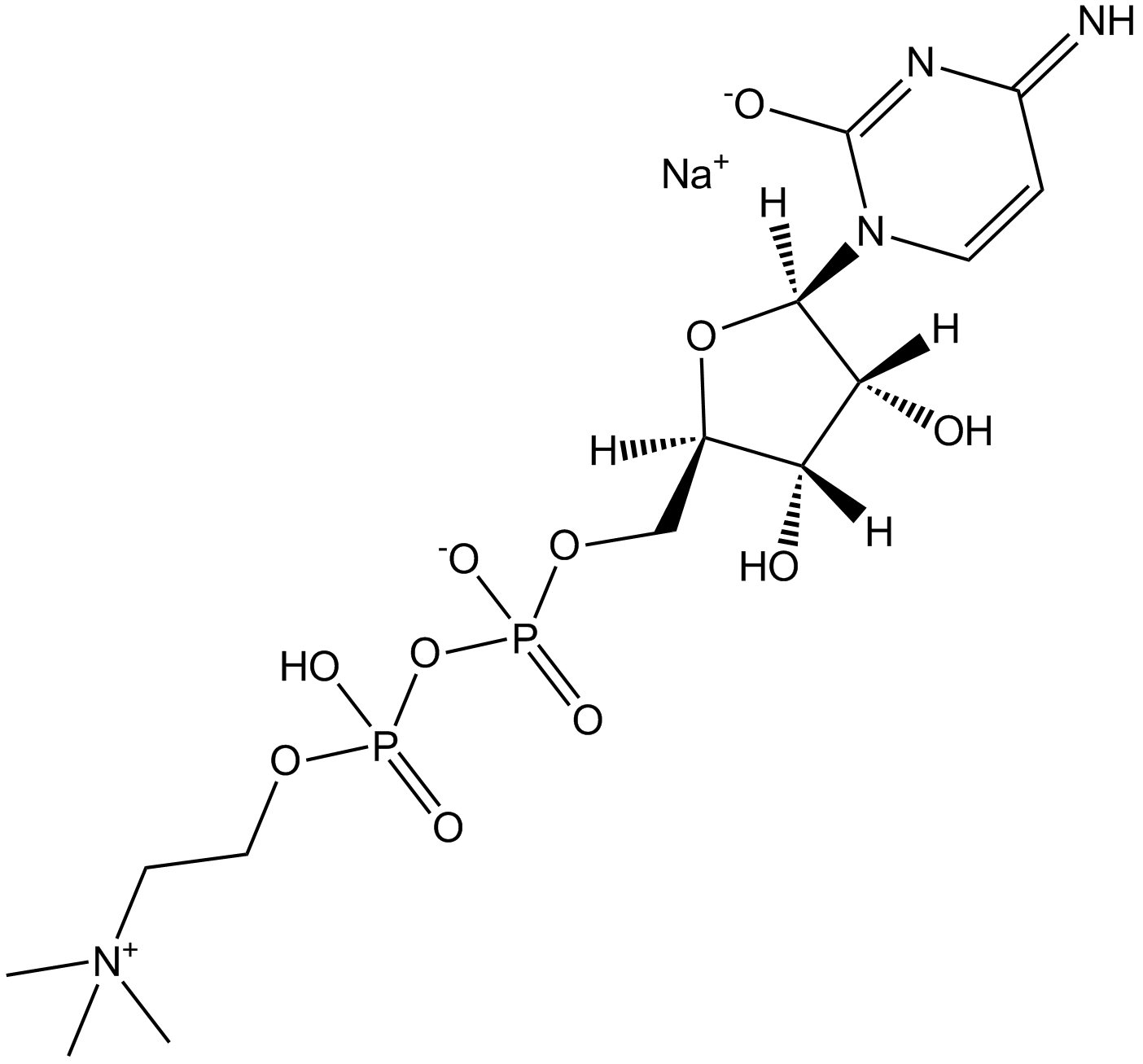
-
GC30598
Citraconic acid
Citraconic acid belongs to the class of organic compounds known as methyl-branched fatty acids.
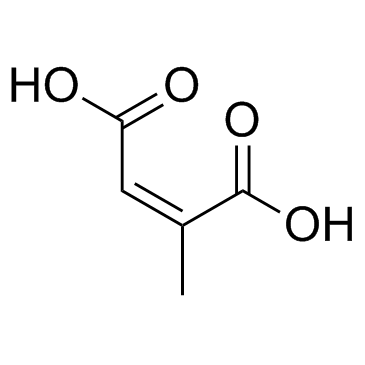
-
GC14203
Citric acid
Commonly used laboratory reagent
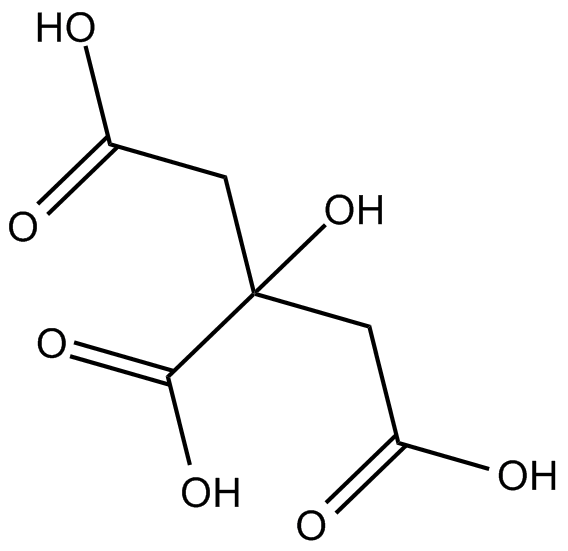
-
GC43296
Coenzyme B12
Coenzyme B12 (Coenzyme B12;Cobamamide;AdoCbl) is an active form of Vitamin B12 which is a cofactor for methylmalonyl CoA mutase[1]In Vitro: Coenzyme B12 serves as the cofactor for a group of enzymes that catalyze unusual rearrangement or elimination reactions.

-
GC60720
Coenzyme FO
Coenzyme FO, a deazaflavin chromophore, acts as an important hydride acceptor/donor in the central methanogenic pathway.
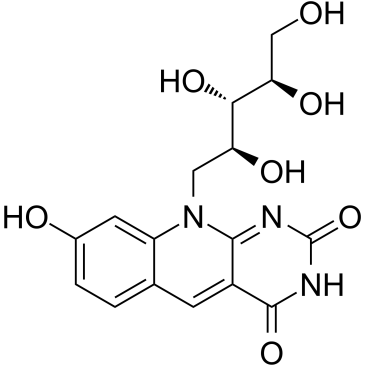
-
GN10668
Coenzyme Q10
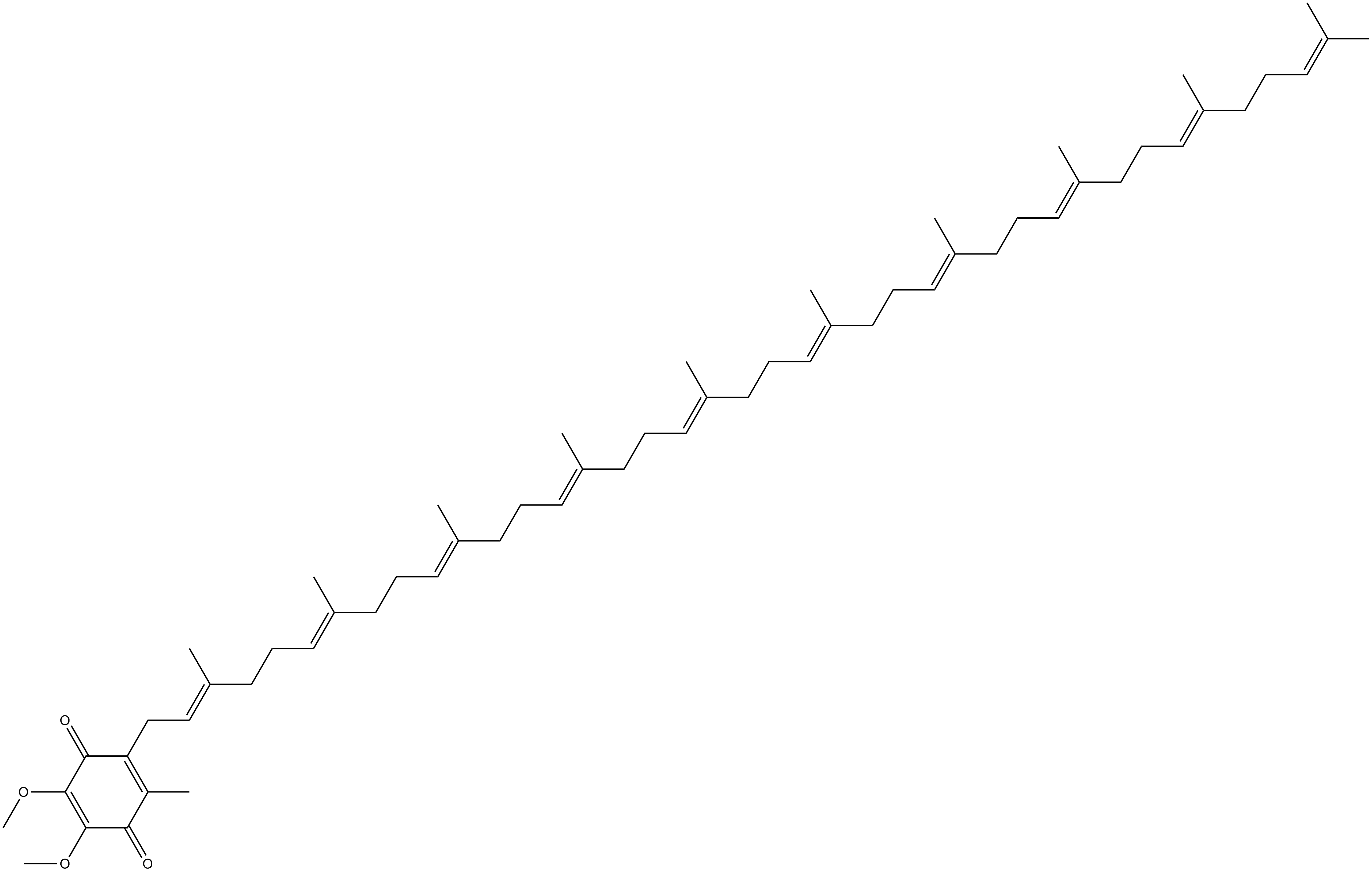
-
GC32470
Coenzyme Q9 (Ubiquinone Q9)
Coenzyme Q9 (Ubiquinone Q9) (Ubiquinone Q9), the major form of ubiquinone in rodents, is an amphipathic molecular component of the electron transport chain that functions as an endogenous antioxidant.
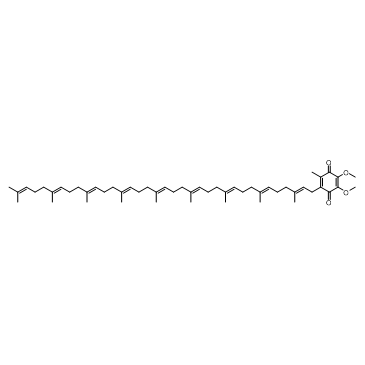
-
GC39702
Copper tripeptide
Copper tripeptide (GHK-Cu) is a tripeptide.
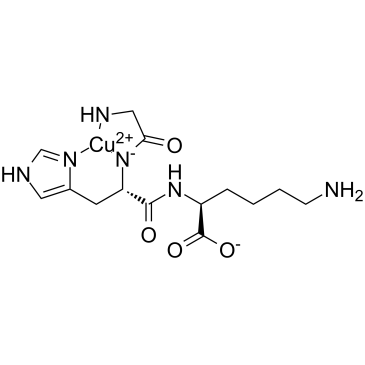
-
GC30166
Coproporphyrin III (Zincphyrin)
Coproporphyrin III (Zincphyrin) (Zincphyrin) is a naturally occurring porphyrin derivative that is mainly found in urine.
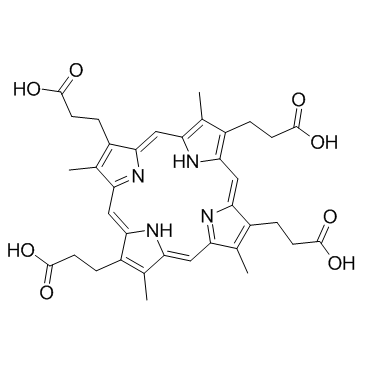
-
GC12327
Corticosterone
Corticosterone (17 deoxycortisol) is a glucocorticoid with oral activity and produced by adrenal cortex, which plays an important role in regulating the neuronal function of limbic system (including hippocampus, prefrontal cortex and amygdala).
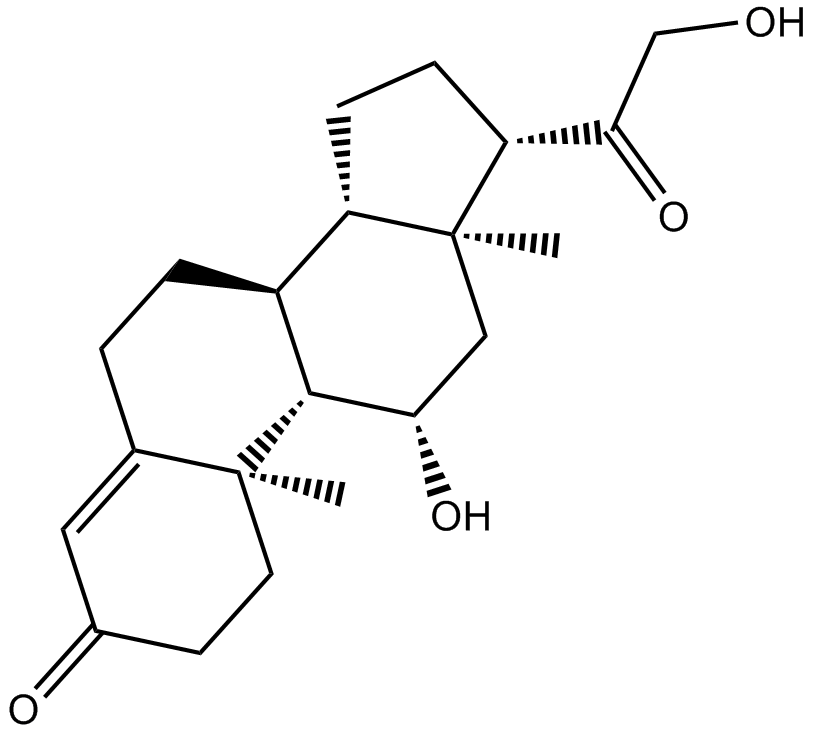
-
GC62906
Cortisol sulfate
Cortisol sulfate (Cortisol 21-sulfate) is a metabolite of Cortisol.
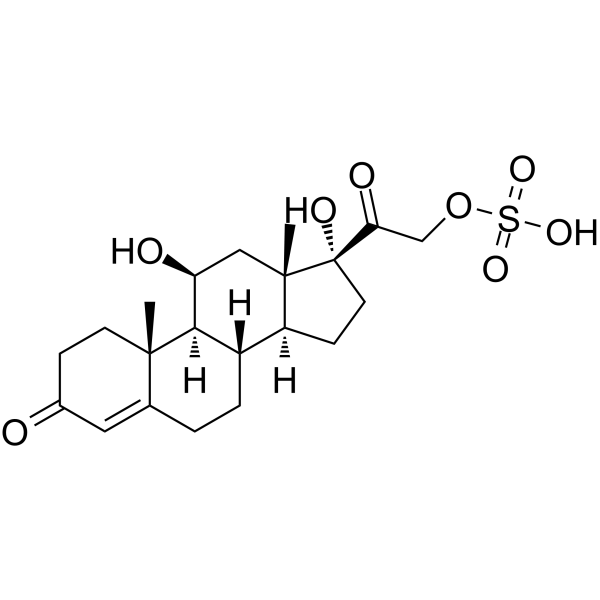
-
GC65197
Cortisol sulfate sodium
Cortisol sulfate sodium (Cortisol 21-sulfate) is a metabolite of Cortisol.
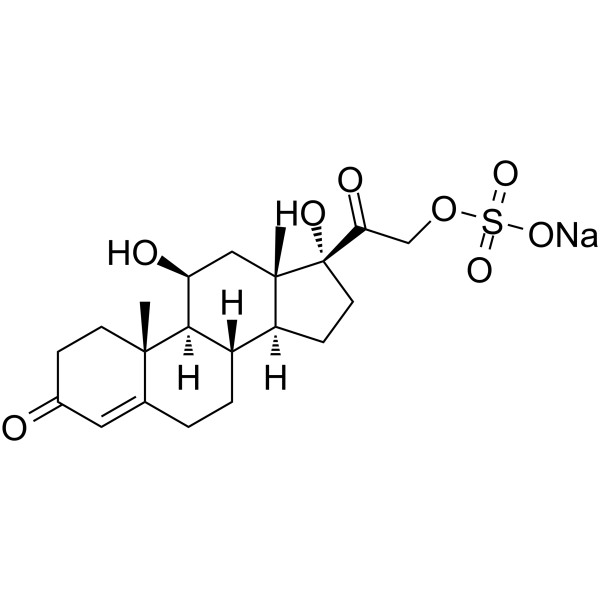
-
GC33839
Cortisone (17-Hydroxy-11-dehydrocorticosterone)
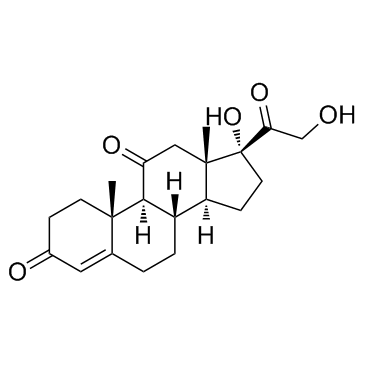
-
GC16772
Cortisone acetate
Glucocorticoid receptor agonist
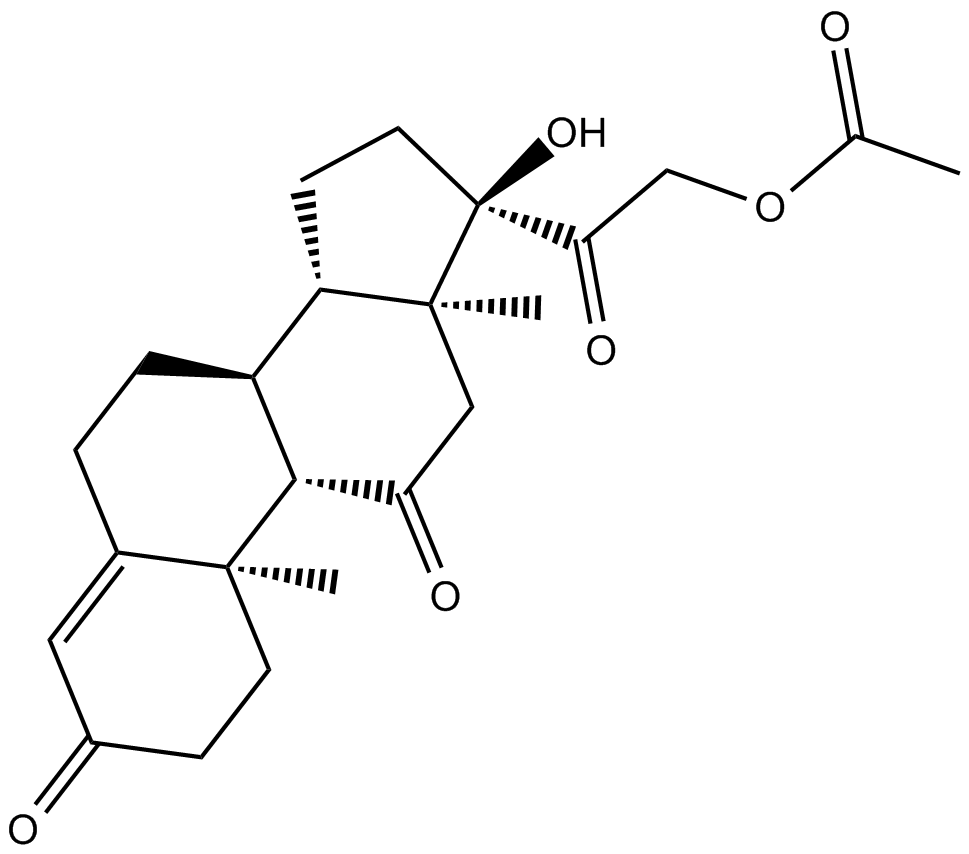
-
GC39363
Cortodoxone
Cortodoxone is a glucocorticoid steroid hormone that can be oxygenated to cortisol (Hydrocortisone).
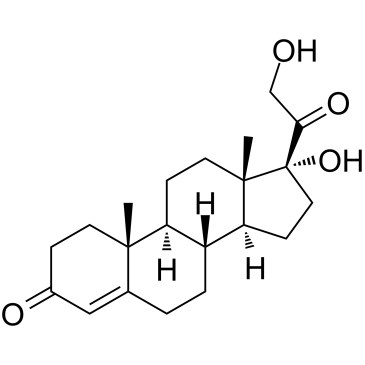
-
GC39836
Coumaran
Coumaran (2,3-Dihydrobenzofuran) is an acetylcholinesterase (AChE) inhibitor isolated from leaves of L.
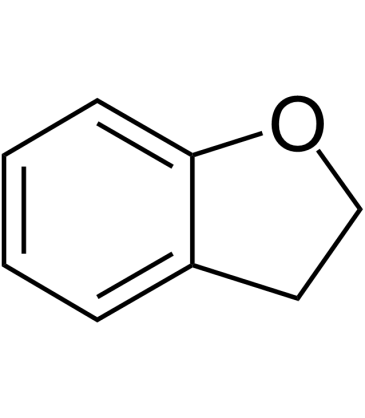
-
GC33777
Creatine
Creatine, an endogenous amino acid derivative, plays an important role in cellular energy, especially in muscle and brain.
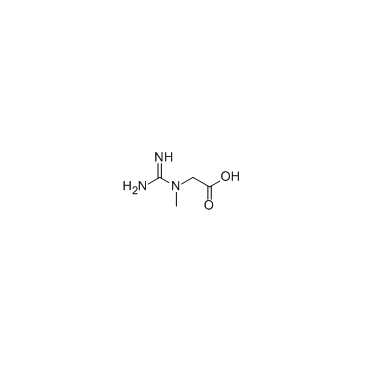
-
GC43323
Creatine Phosphate (potassium salt)
Creatine Phosphate (potassium salt), primarily found in the skeletal muscles of vertebrates and one of organic compounds known as alpha amino acids and derivatives, is a substrate for the determination of creatine kinase and used to regenerate ATP during skeletal muscle contraction.

-
GC11872
Creatinine
Break-down product of creatine phosphate in muscle
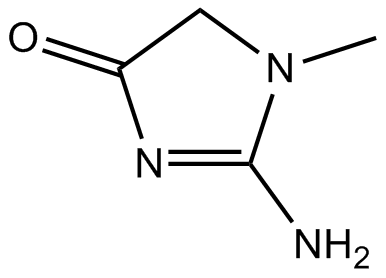
-
GC39366
Creatinine-D3
An internal standard for the quantification of creatinine
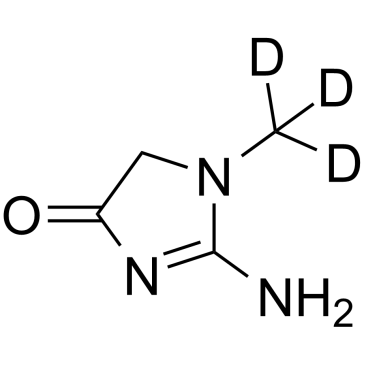
-
GC60728
Creosol
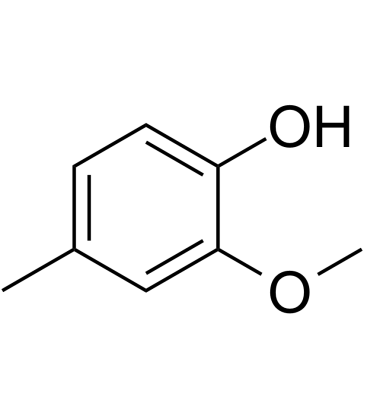
-
GC35752
CS-722 Free base
CS-722 Free base is a synthesized centrally acting muscle relaxant, and has a muscle relaxant activity and depressant effectson the spinal reflex.
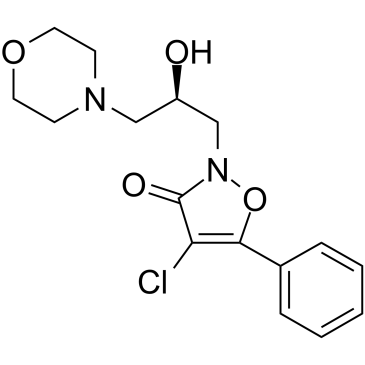
-
GC38235
Cuminaldehyde
Cuminaldehyde is the major component of Cuminum cyminum, a natural aldehyde with inhibitory effect on alpha-synuclein fibrillation and cytotoxicity. Cuminaldehyde shows anticancer activity.
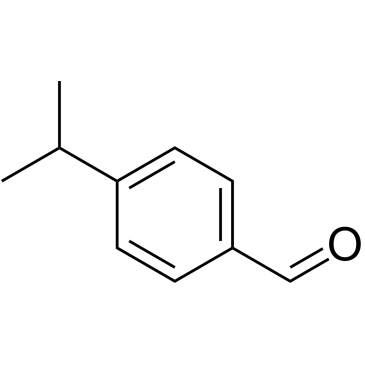
-
GC62179
Cyclic ADP-ribose
Cyclic ADP-ribose (cADPR) is a potent second messenger for calcium mobilization that is synthesized from NAD+ by an ADP-ribosyl cyclase.
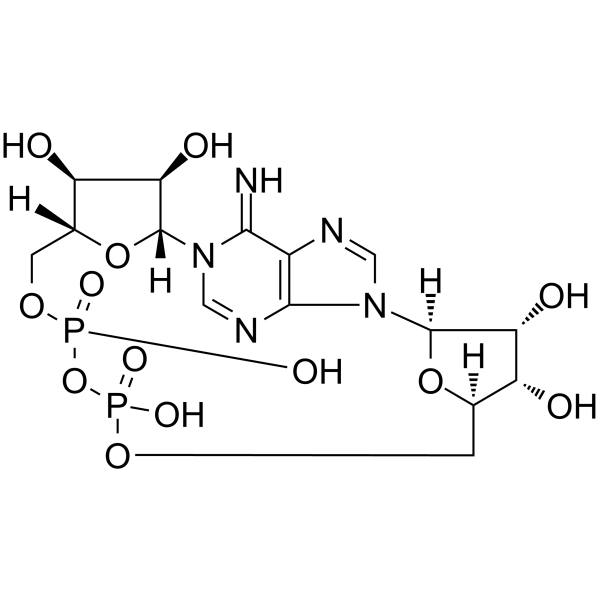
-
GC61792
Cyclic ADP-ribose ammonium
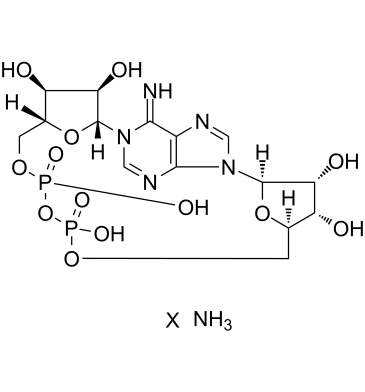
-
GC19626
Cyclic AMP
A second messenger
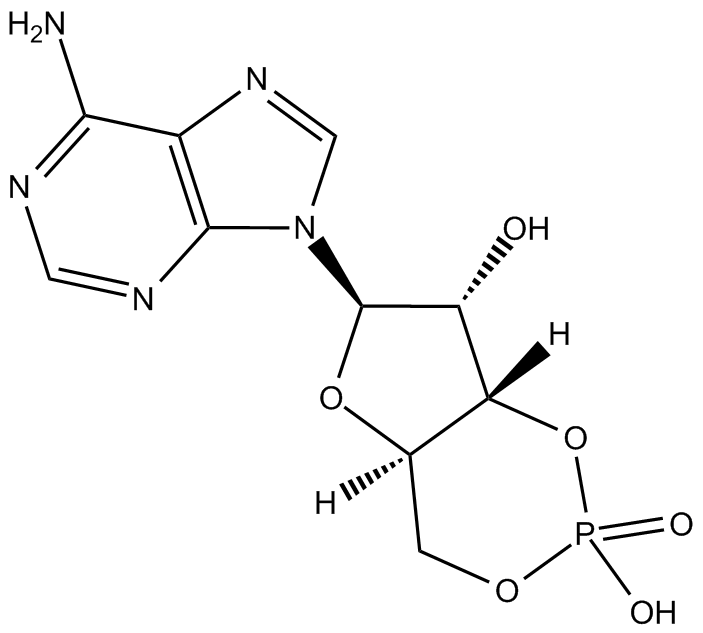
-
GC62372
Cyclic-di-GMP sodium
Cyclic-di-GMP sodium is a STING agonist and a bacterial second messenger that coordinates different aspects of bacterial growth and behavior, including motility, virulence, biofilm formation, and cell cycle progression. Cyclic-di-GMP sodium has anti-cancer cell proliferation activity and also induces elevated CD4 receptor expression and cell cycle arrest. Cyclic-di-GMP sodium can be used in cancer research.
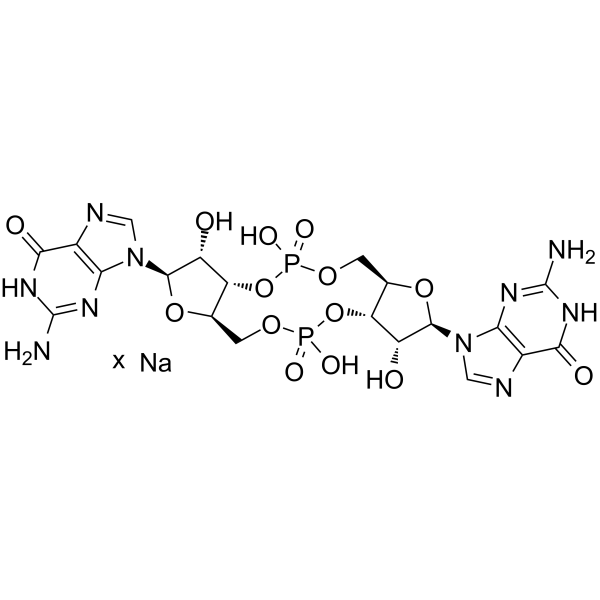
-
GA21297
Cyclo(-Ala-Gly)

-
GC30806
Cyclo(his-pro) (Cyclo(histidyl-proline))
Cyclo(his-pro) (Cyclo(histidyl-proline)) (Cyclo(histidyl-proline)) is an orally active cyclic dipeptide structurally related to tyreotropin-releasing hormone.
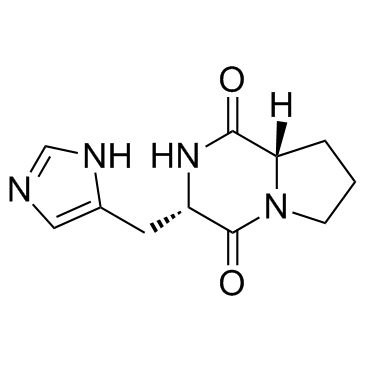
-
GC38761
Cyclo(his-pro) TFA
Cyclo(his-pro) TFA (Cyclo(histidyl-proline) TFA) is an orally active cyclic dipeptide structurally related to tyreotropin-releasing hormone.
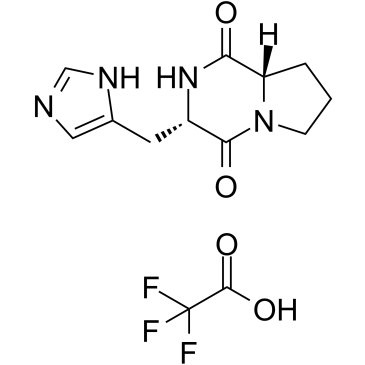
-
GC60734
Cyclohexaneacetic acid
Cyclohexaneacetic acid is an endogenous metabolite.
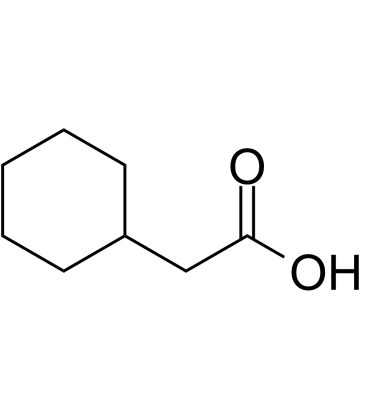
-
GC13441
Cyclopamine
Hedgehog (Hh) signaling Inhibitor
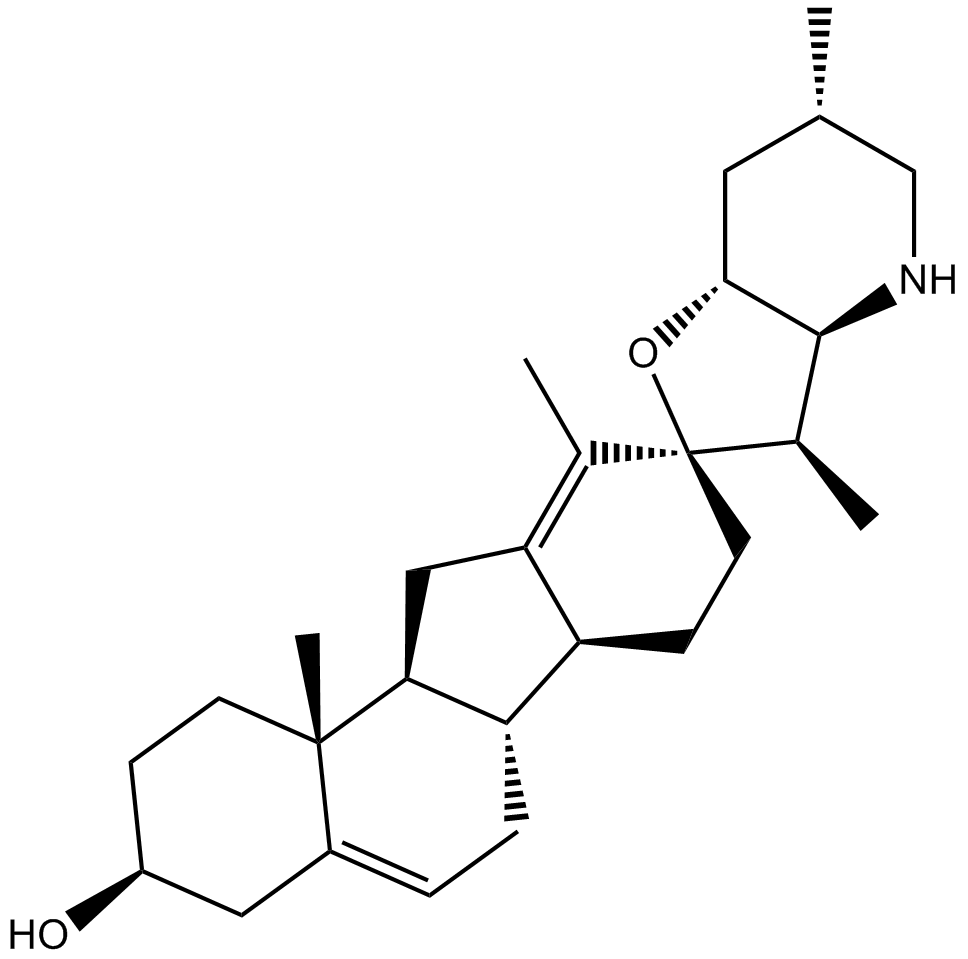
-
GC33779
Cysteamine (β-Mercaptoethylamine)
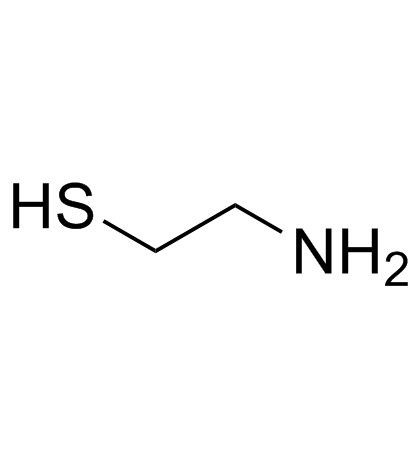
-
GC13502
Cysteamine HCl
Cysteamine HCl (2-Aminoethanethiol hydrochloride) is an orally active agent for the treatment of nephropathic cystinosis and an antioxidant.
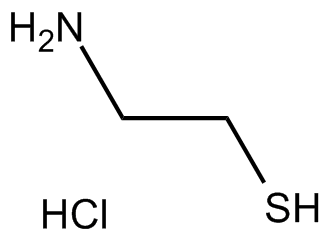
-
GC61940
Cysteinylglycine TFA
Cysteinylglycine TFA is an endogenous metabolite and used in disease diagnosis.
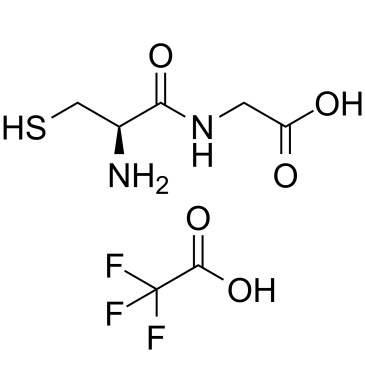
-
GC13729
Cytidine
pyrimidine nucleoside
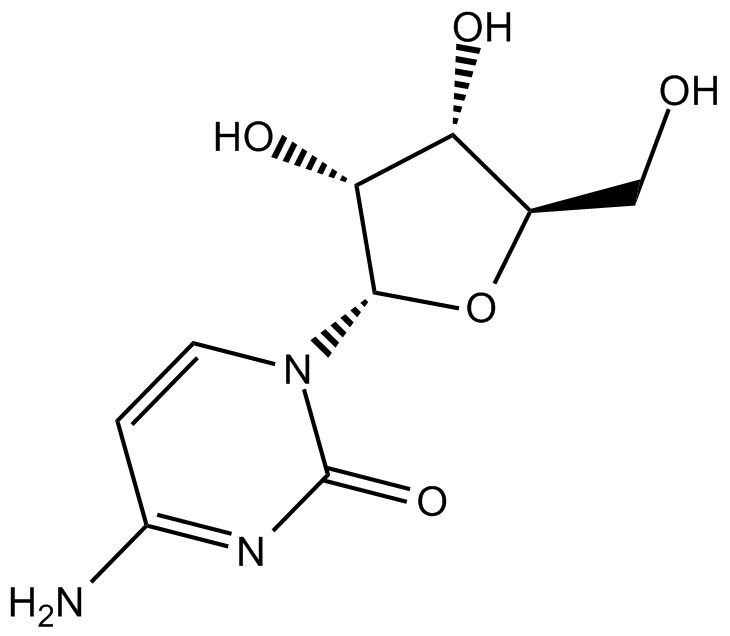
-
GC43355
Cytidine 5'-triphosphate (sodium salt)
Cytidine 5'-triphosphate (sodium salt) is an endogenous metabolite.

-
GC33594
Cytosine
Cytosine is one of the four main bases found in DNA and RNA.
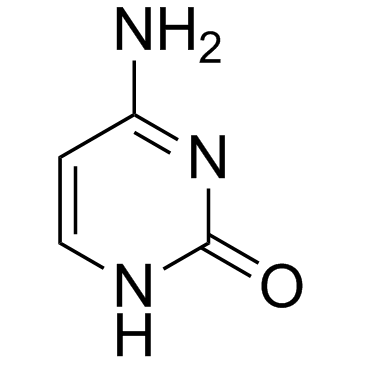
-
GC30620
D(+)-Raffinose pentahydrate (D-Raffinose pentahydrate)
D(+)-Raffinose pentahydrate (D-Raffinose pentahydrate) (D-Raffinose pentahydrate) is a trisaccharide composed of galactose, glucose, and fructose that occurs naturally in a variety of vegetables and grains.
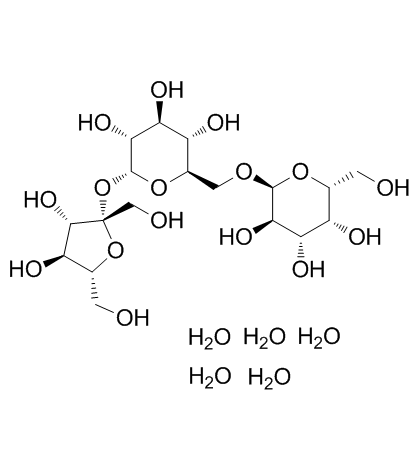
-
GA21410
D-α-Hydroxyisocaproic acid
D-α-Hydroxyisocaproic acid is an amino acid metabolite.

-
GC39652
D-α-Tocopherol acetate
D-α-Tocopherol acetate (D-Vitamin E acetate) can be hydrolyzed to d-alpha-tocopherol (VE) and absorbed in the small intestine.
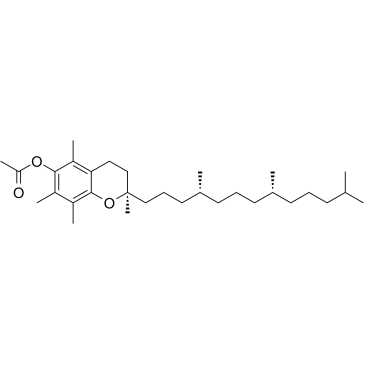
-
GC38691
D-(+)-Cellobiose
A disaccharide
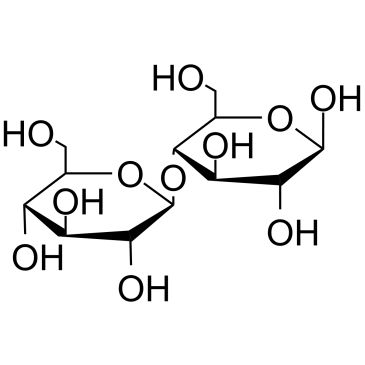
-
GC33606
D-(+)-Glucono-1,5-lactone (Gluconic acid lactone)
D-(+)-Glucono-1,5-lactone (Gluconic acid lactone) is a polyhydroxy (PHA) that is capable of metal chelating, moisturizing and antioxidant activity.
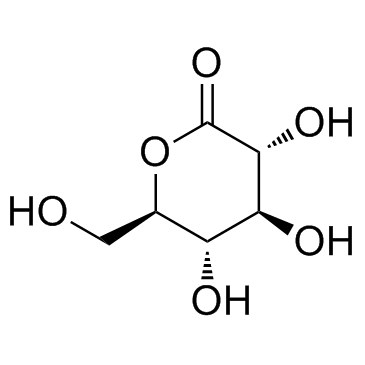
-
GC43367
D-(+)-Glucose-13C6
D-(+)-Glucose-13C6 is intended for use as an internal standard for the quantification of D-(+)-glucose by GC- or LC-MS.

-
GC35793
D-(+)-Phenyllactic acid
D-(+)-Phenyllactic acid is an anti-bacterial agent, excreted by Geotrichum candidum, inhibits a range of Gram-positive from humans and foodstuffs and Gram-negative bacteria found in humans.
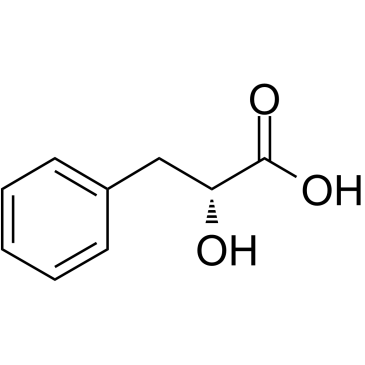
-
GC35794
D-(-)-Lactic acid
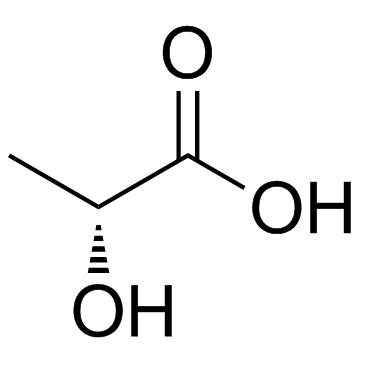
-
GC62920
D-(-)-Lactic acid sodium
D-(-)-Lactic acid ((R)-2-Hydroxypropionic acid ) sodium is an endogenous metabolite.
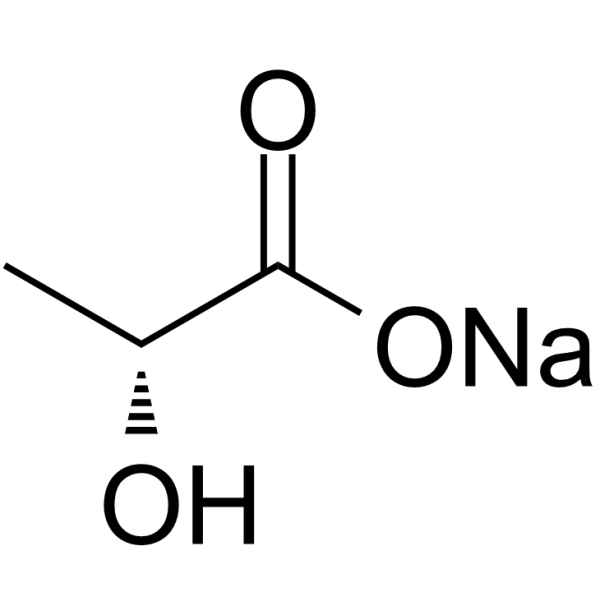
-
GC65896
D-Alanine-d4
D-Alanine-d4 ((R)-Alanine-d4) is the deuterium labeled D-Alanine. D-Alanine is a weak GlyR (inhibitory glycine receptor) and PMBA agonist, with an EC50 of 9 mM for GlyR.
